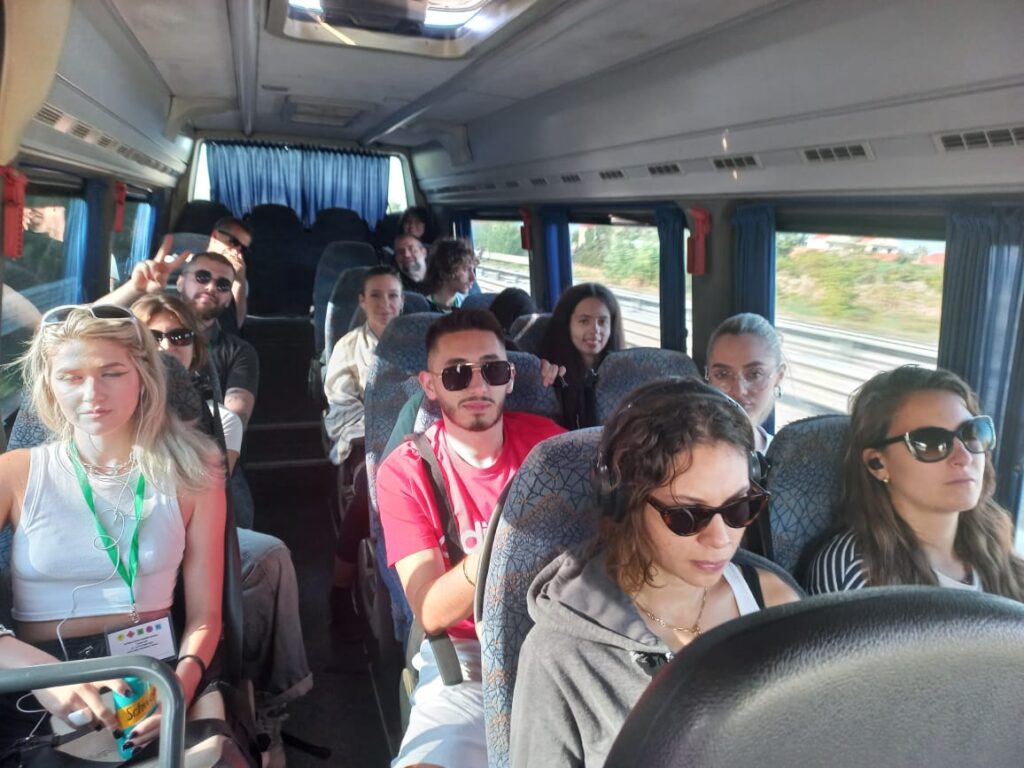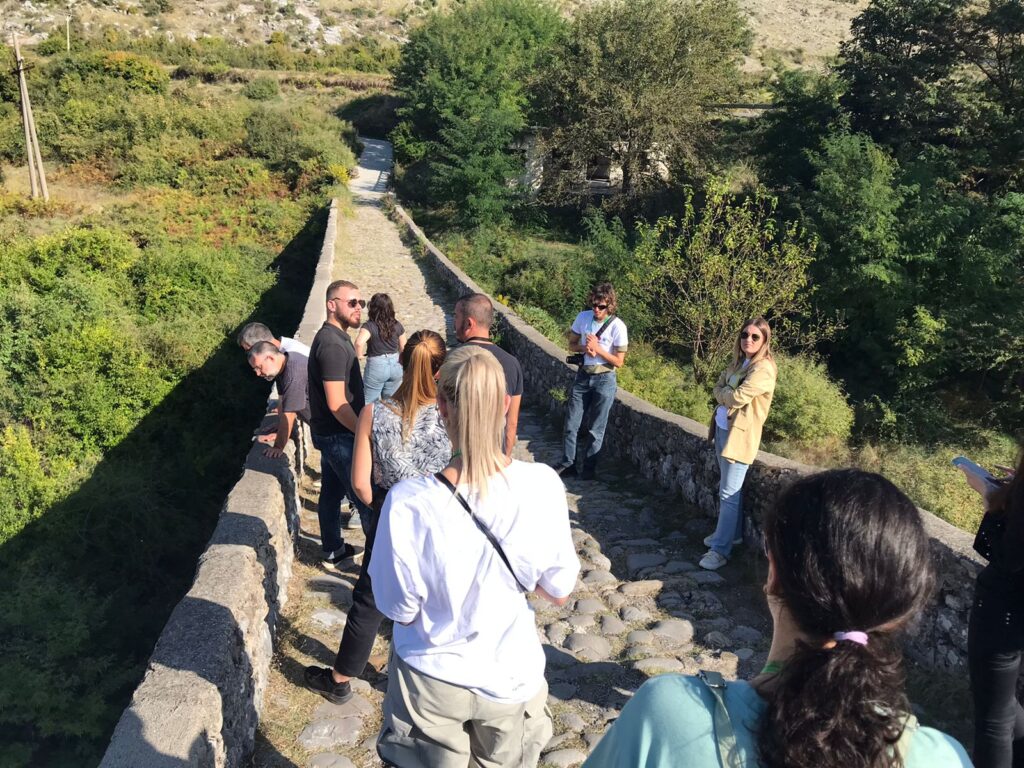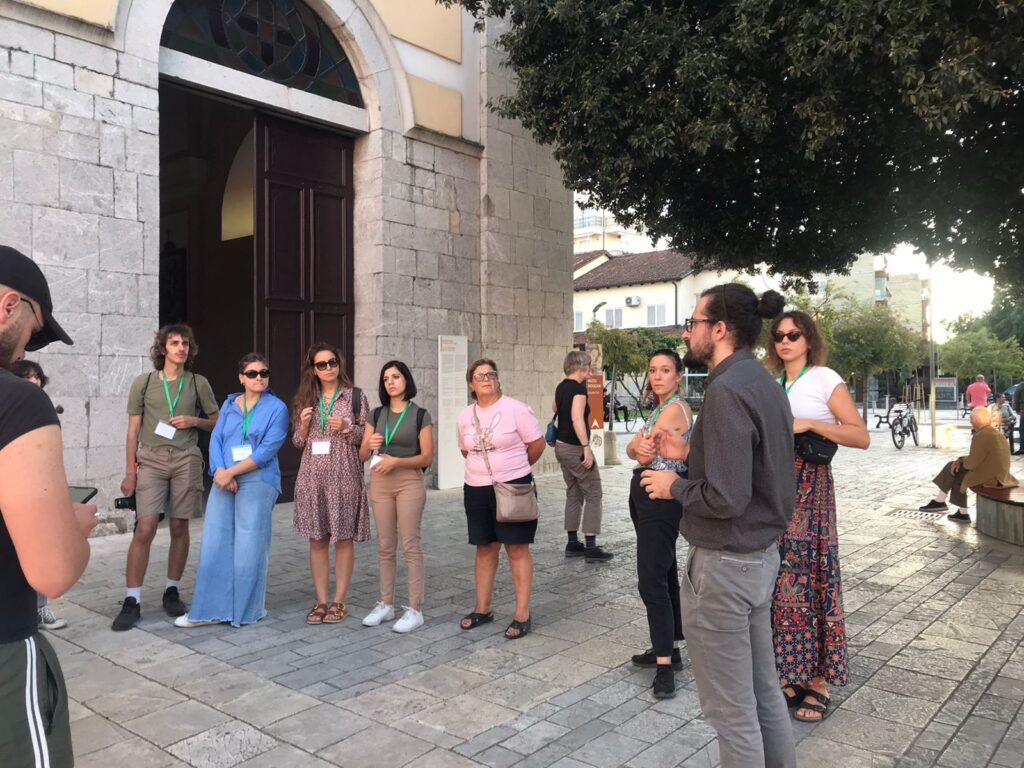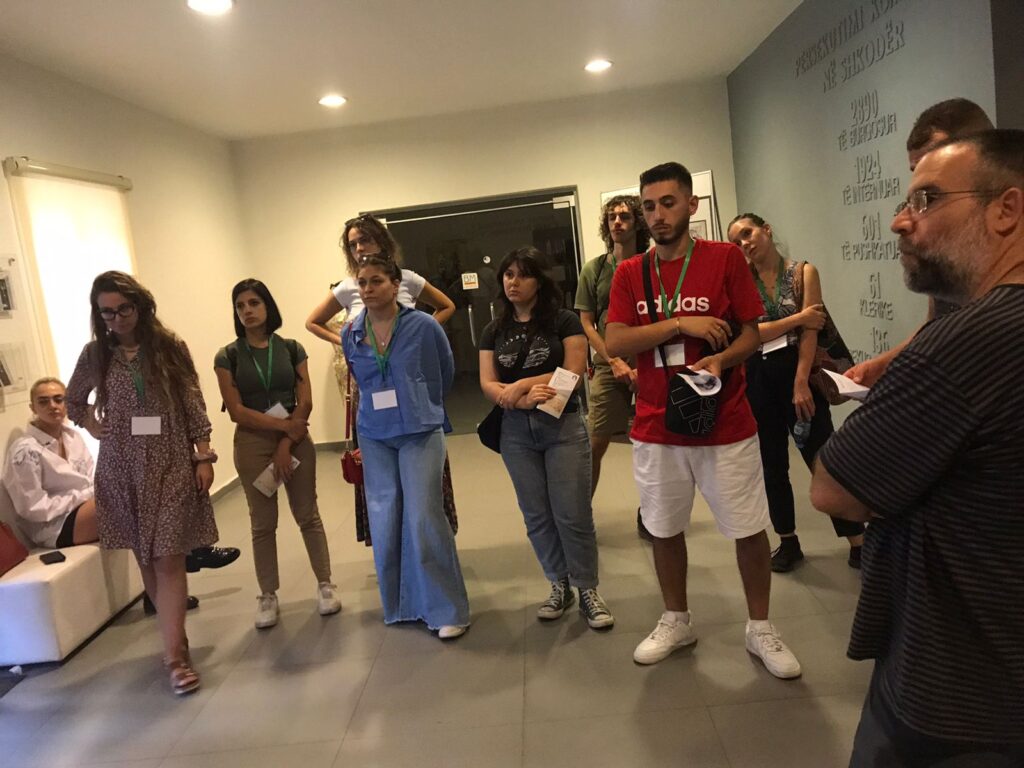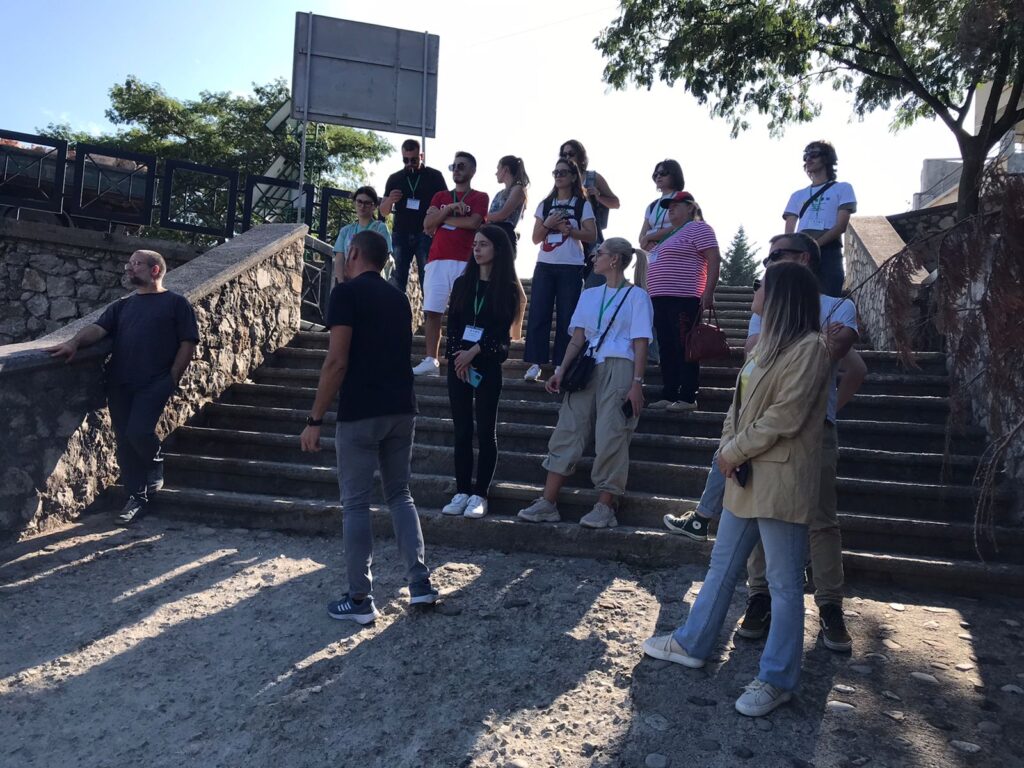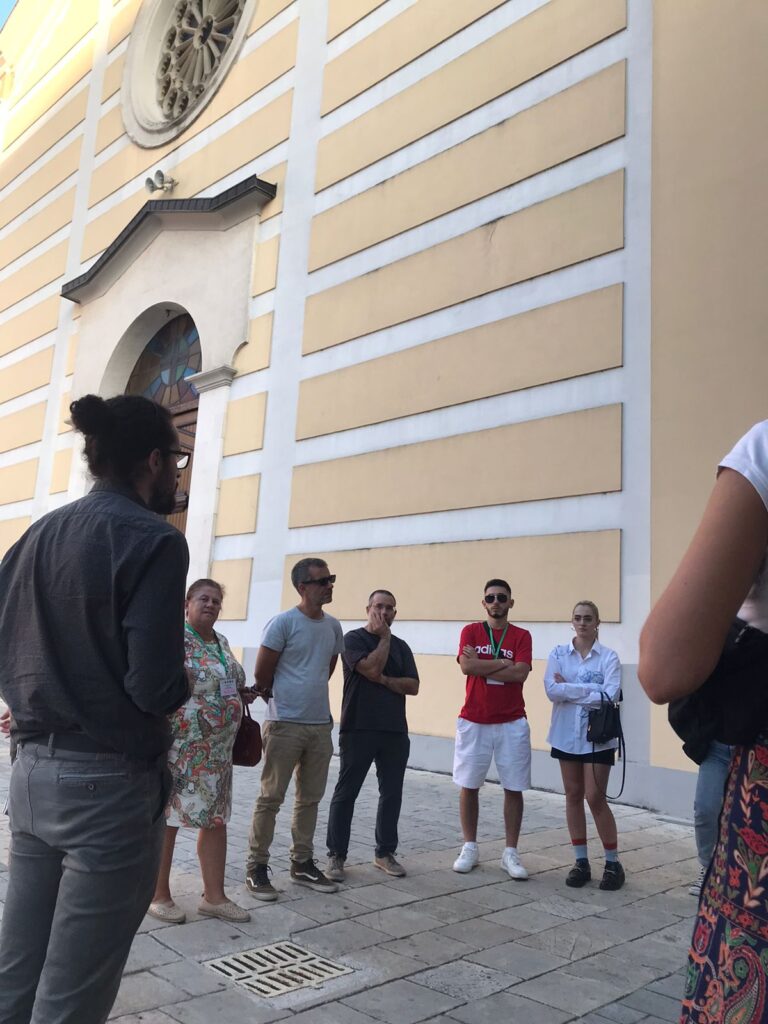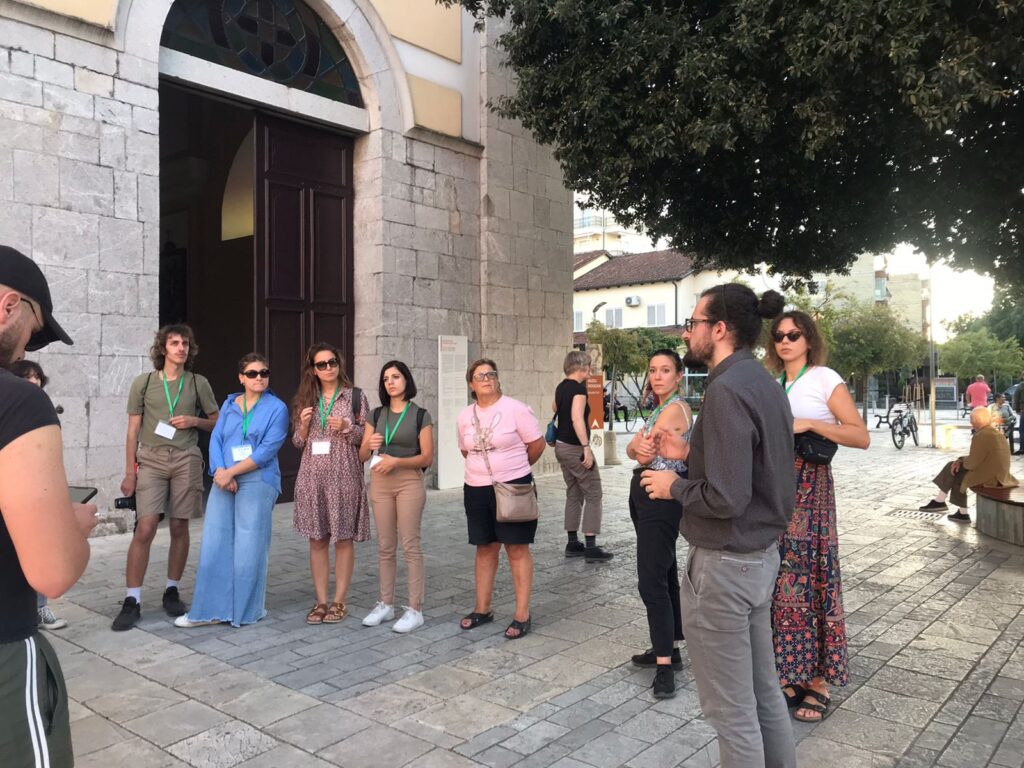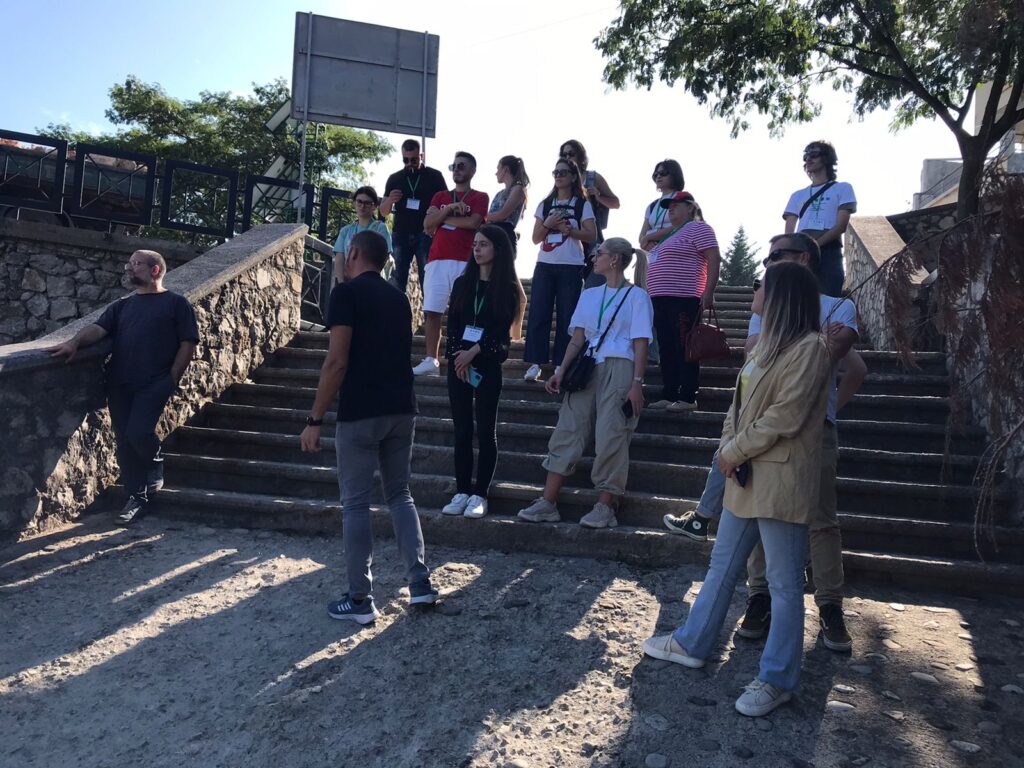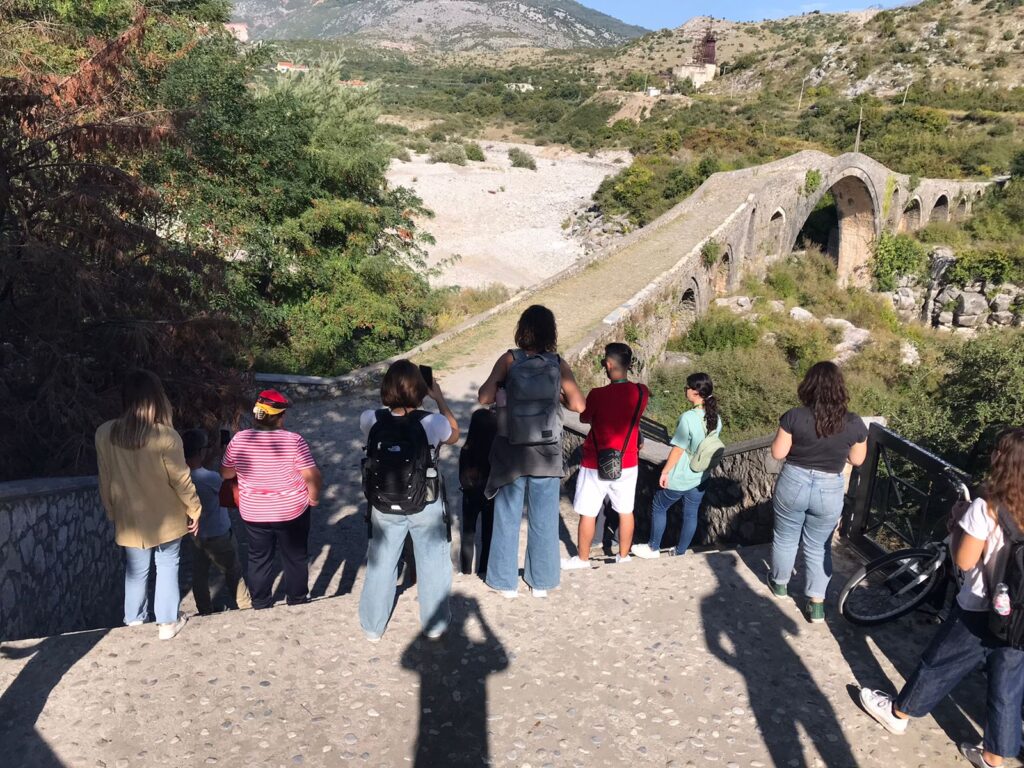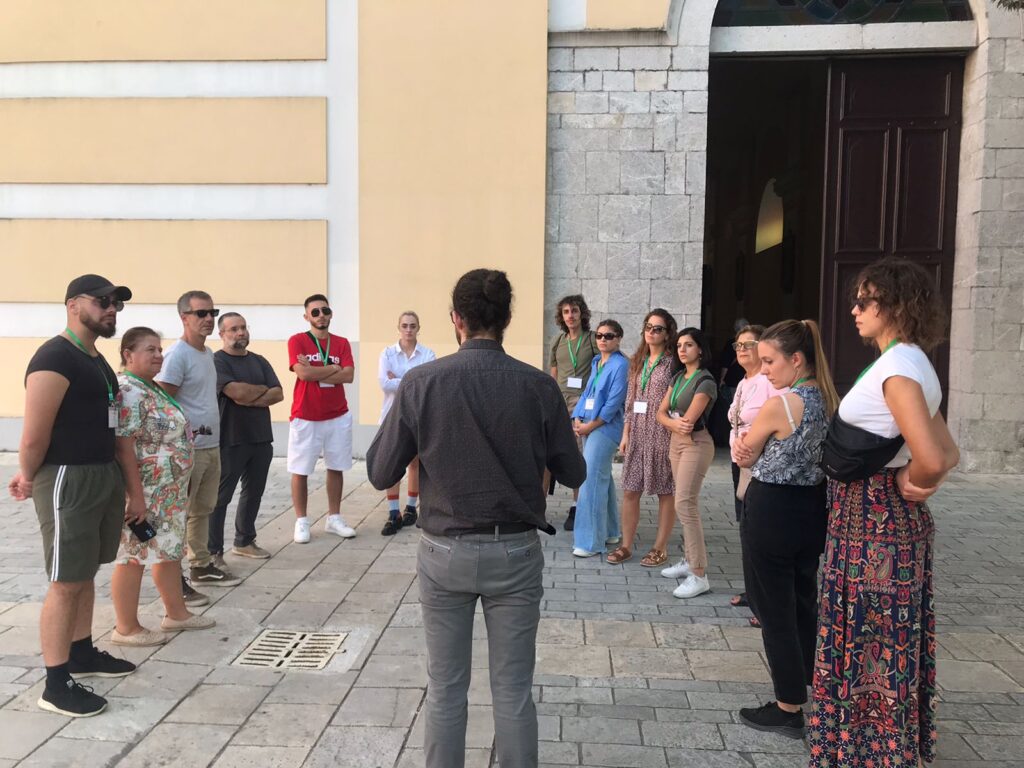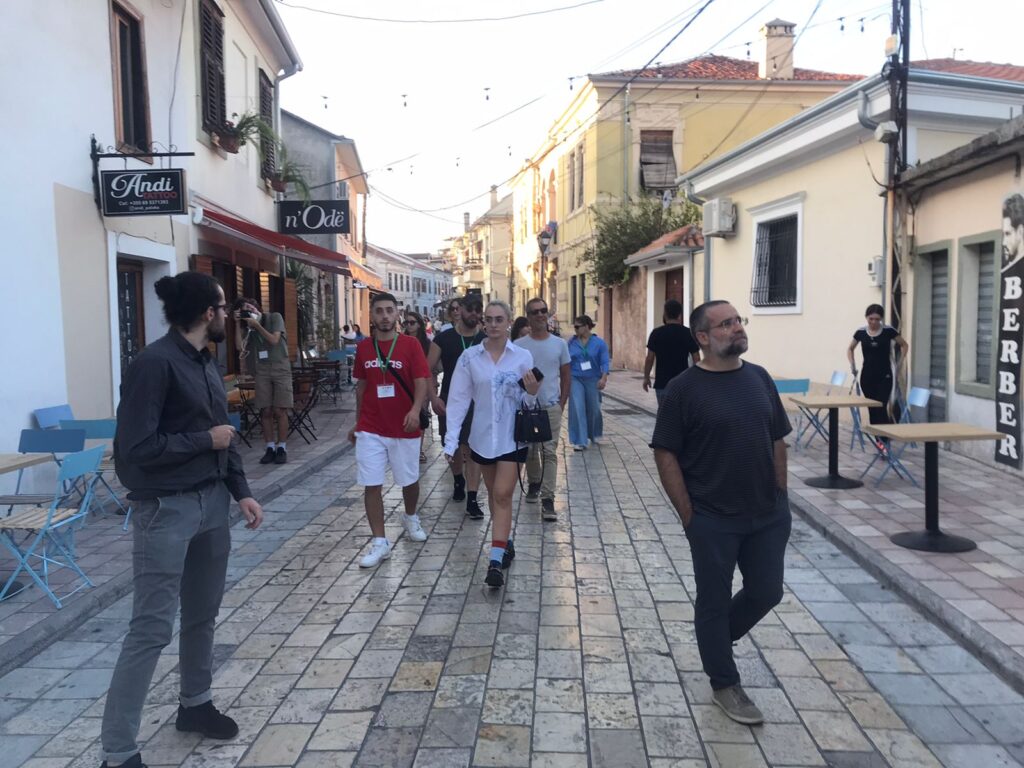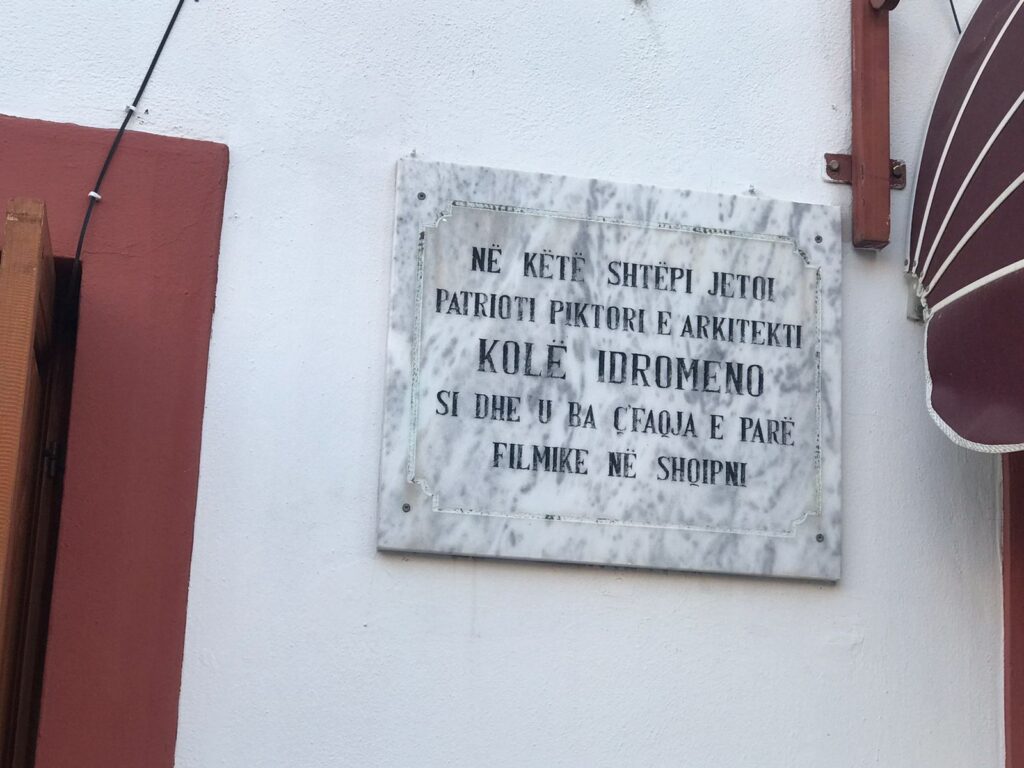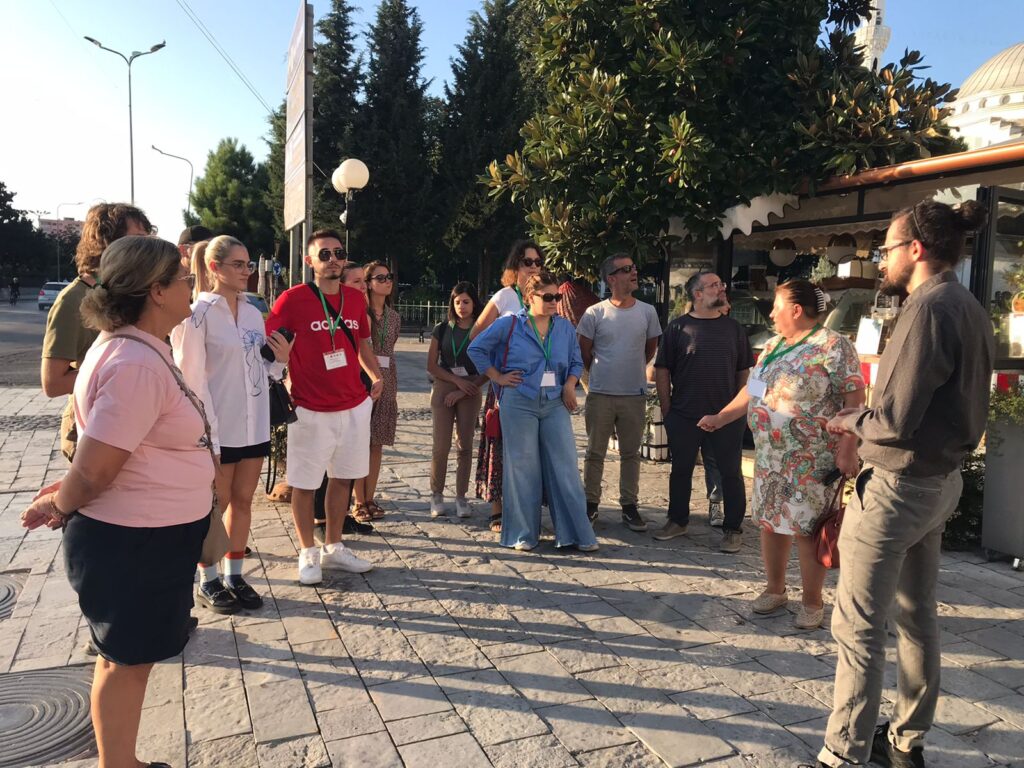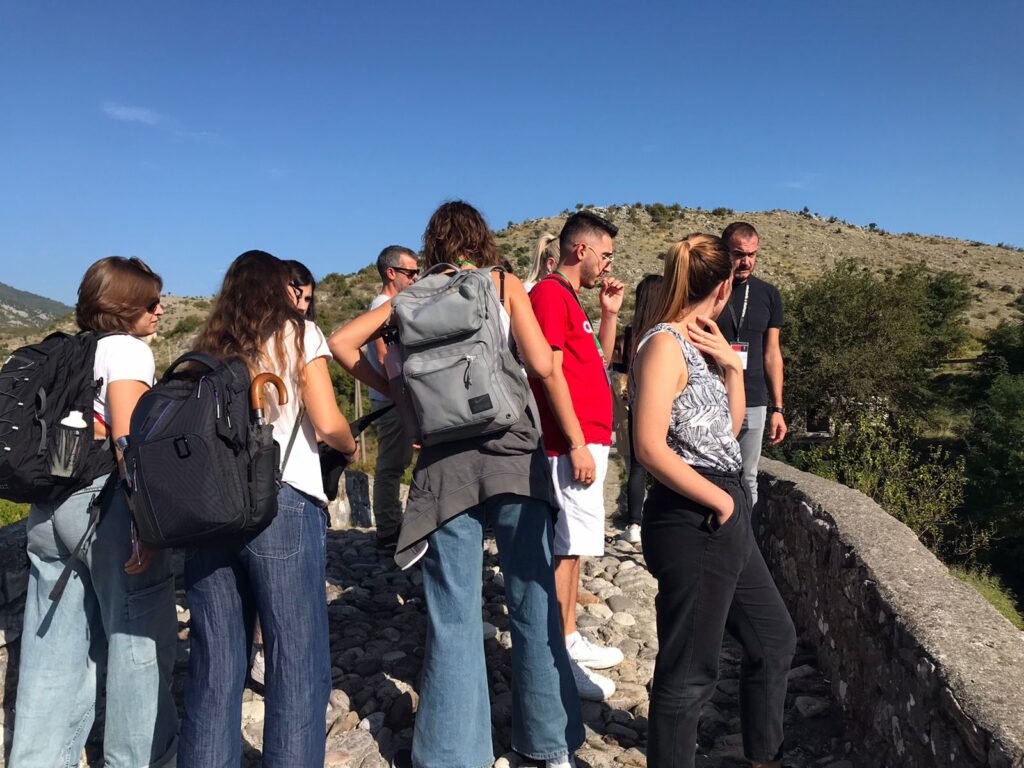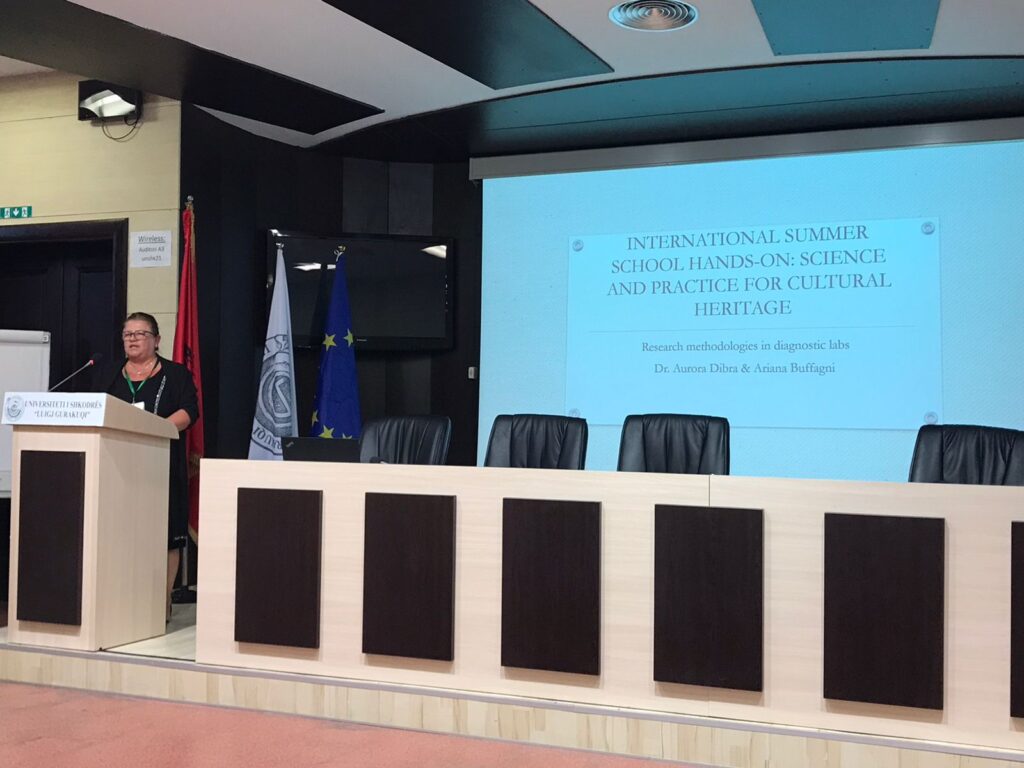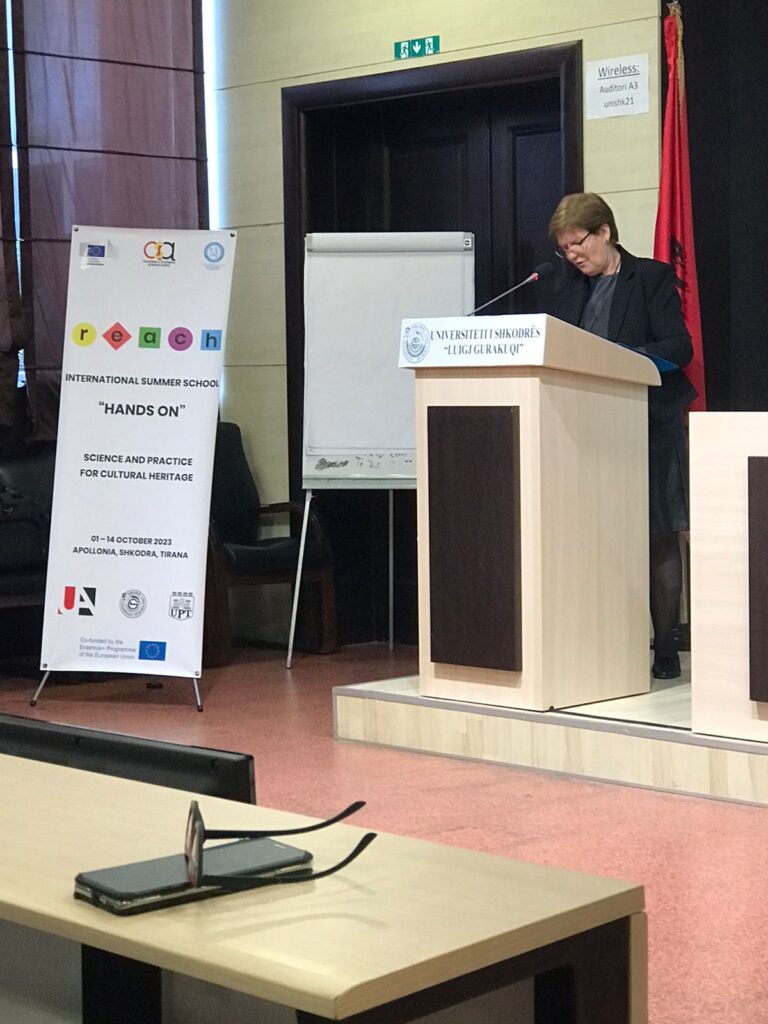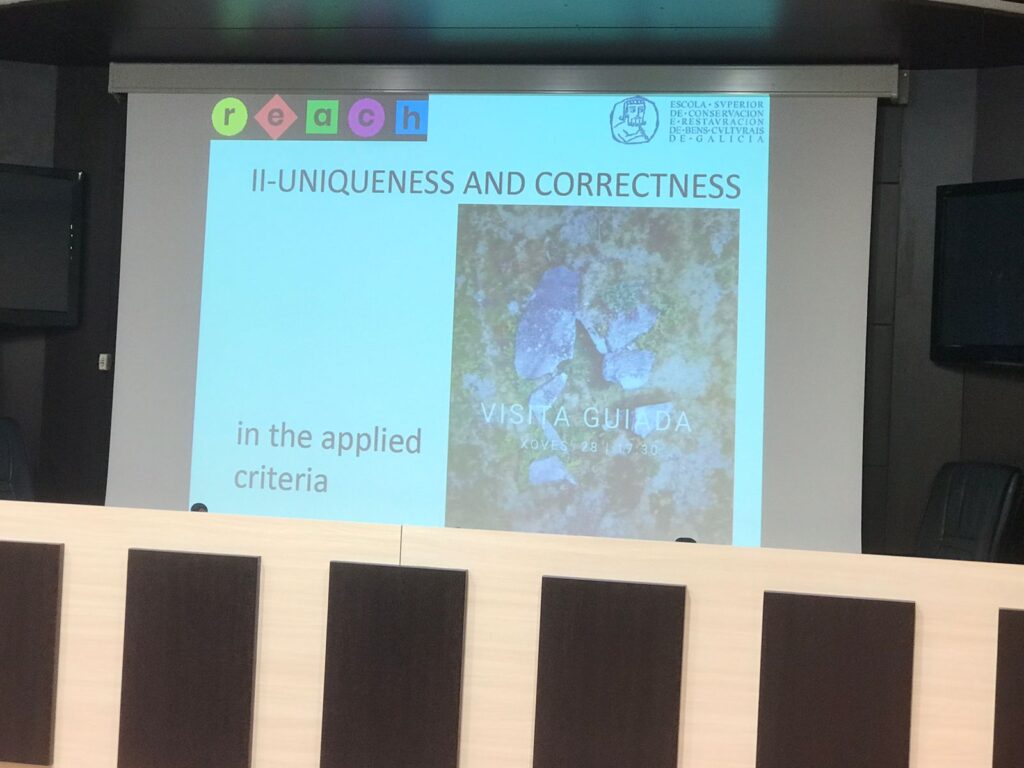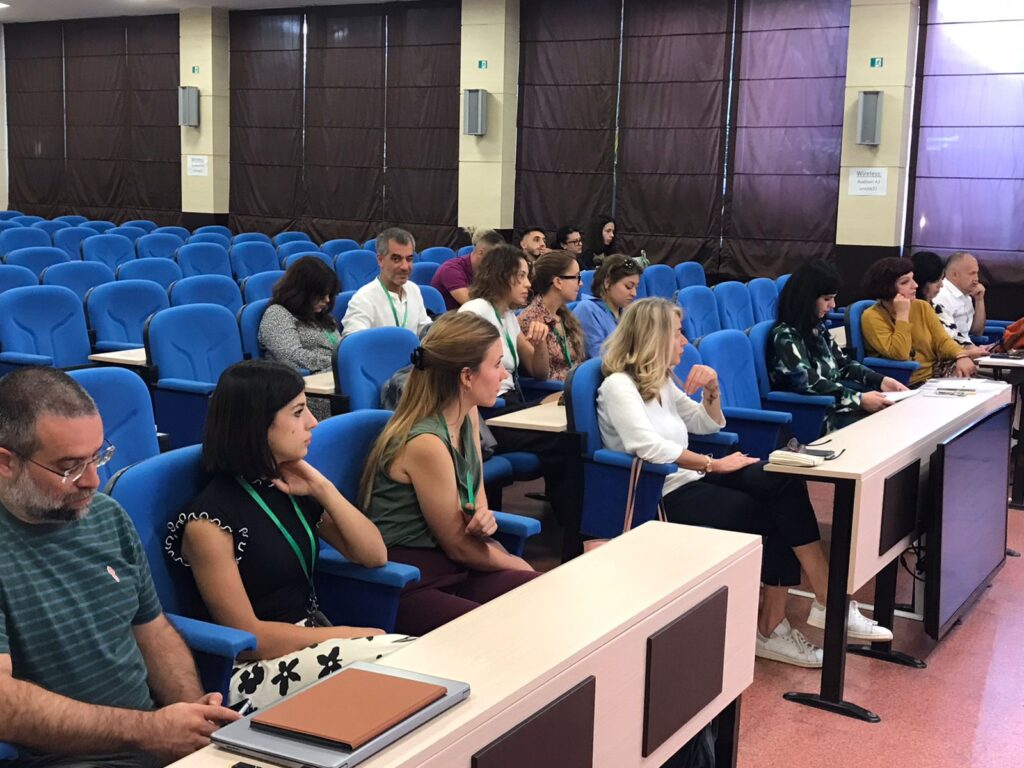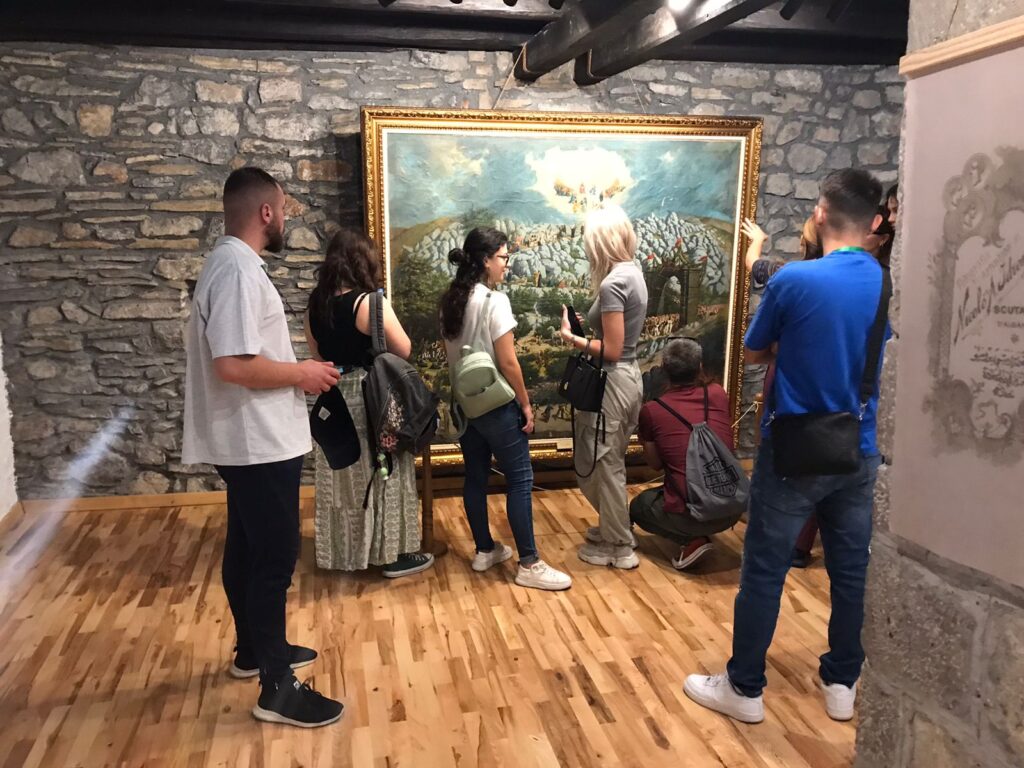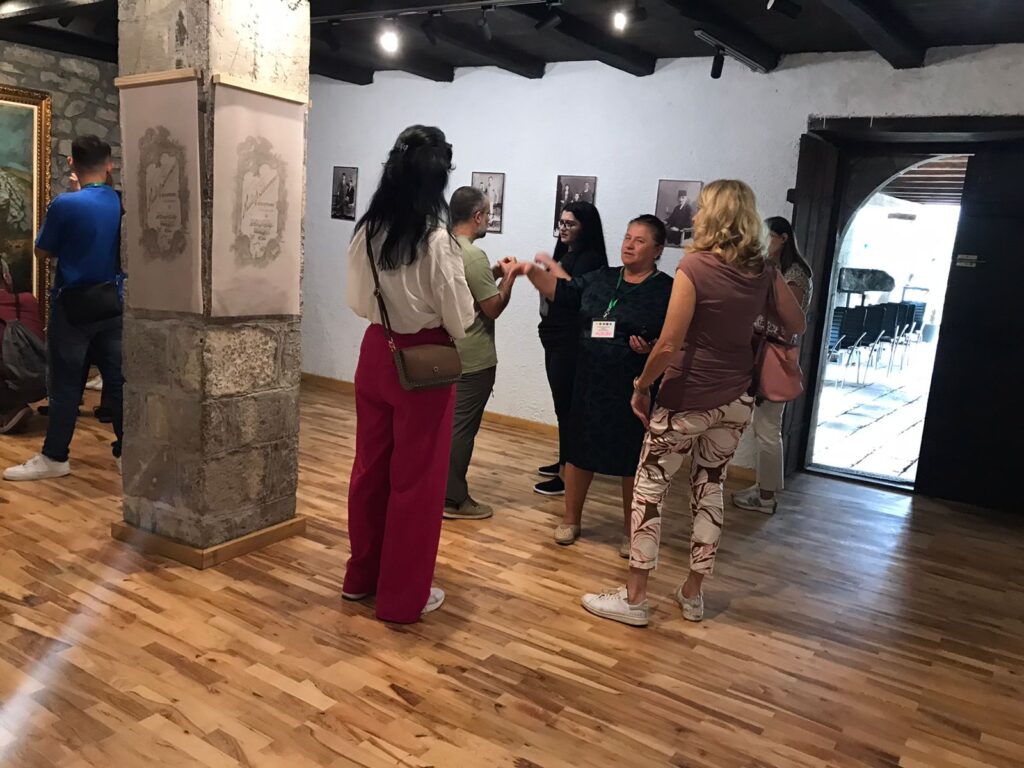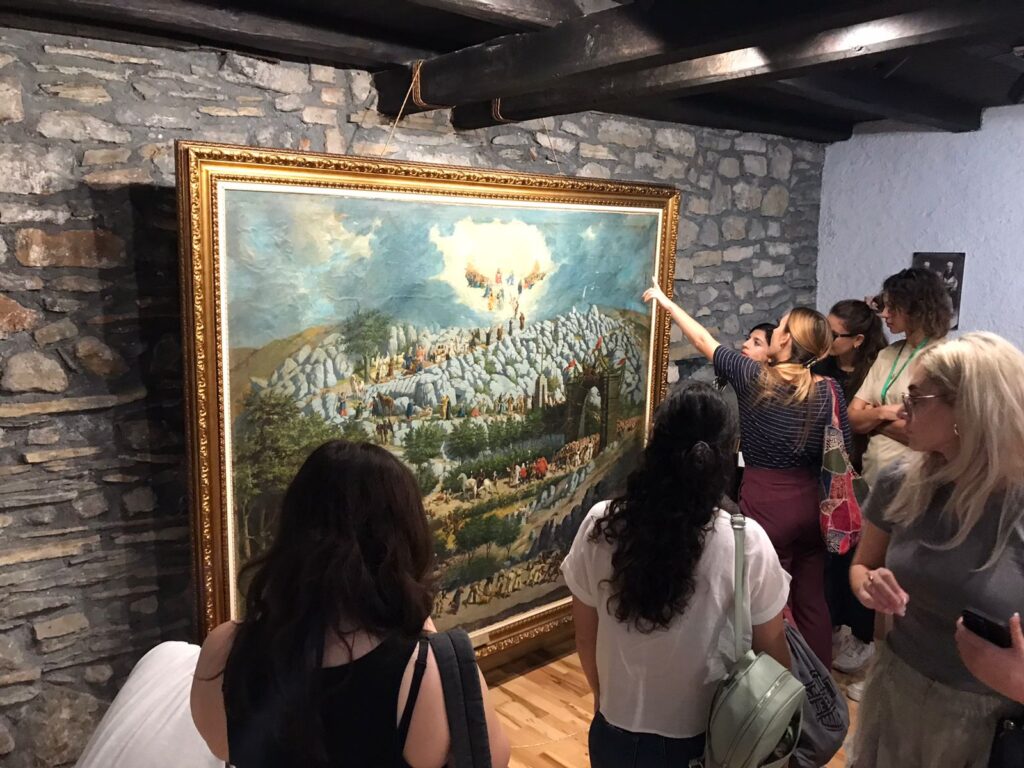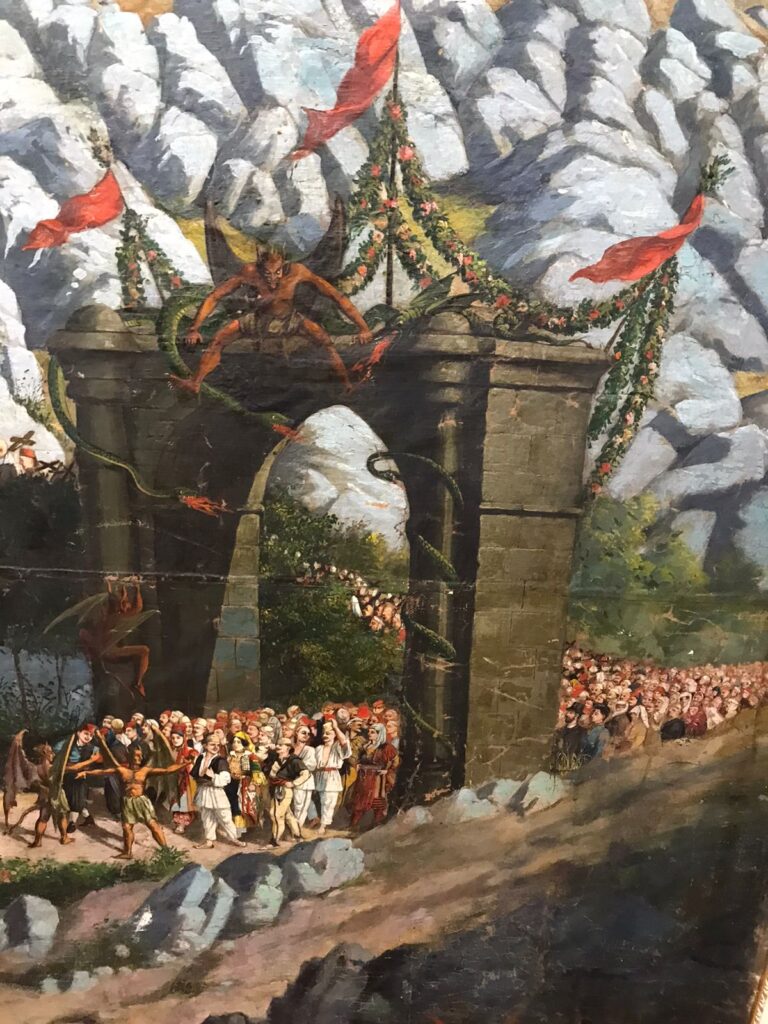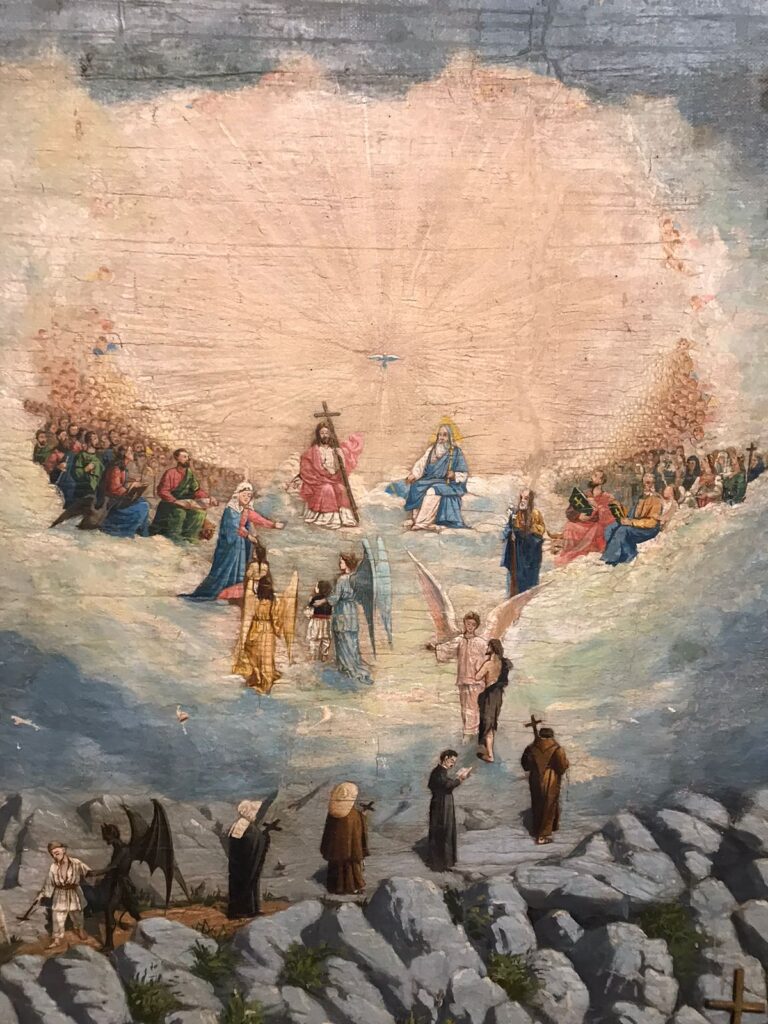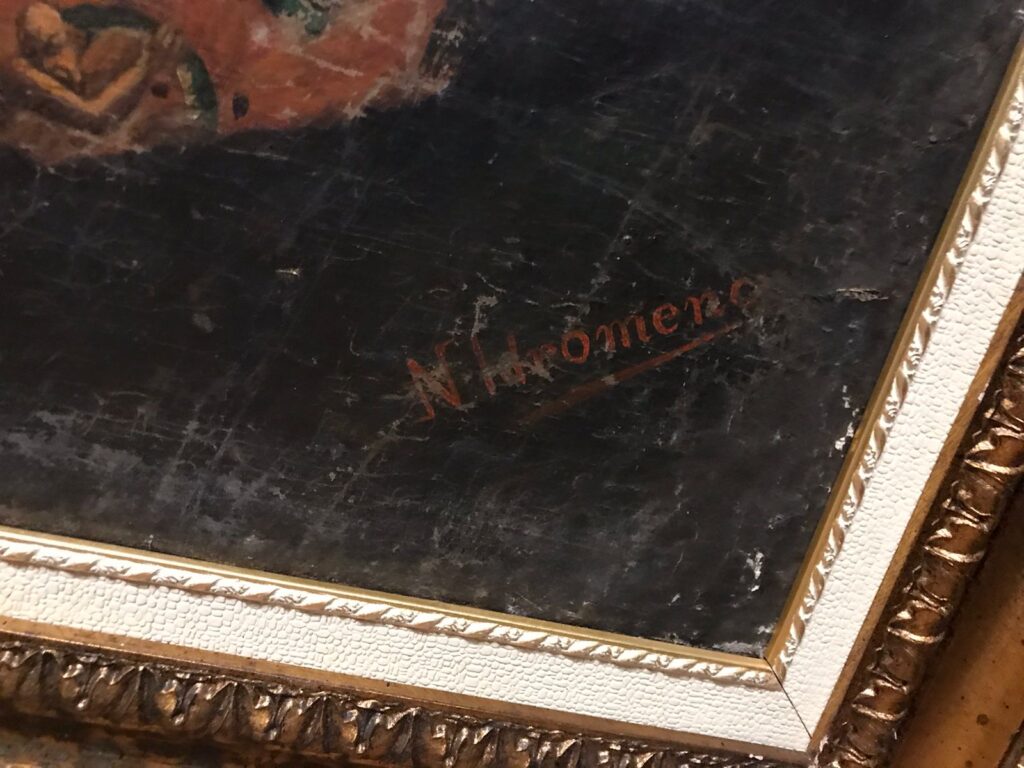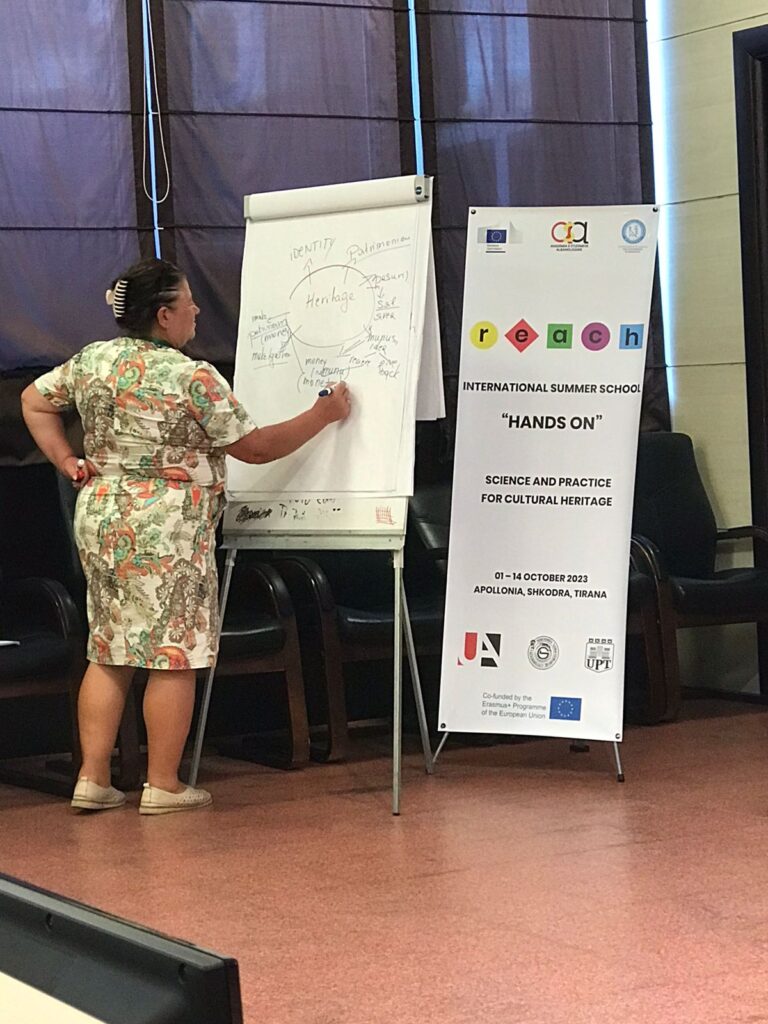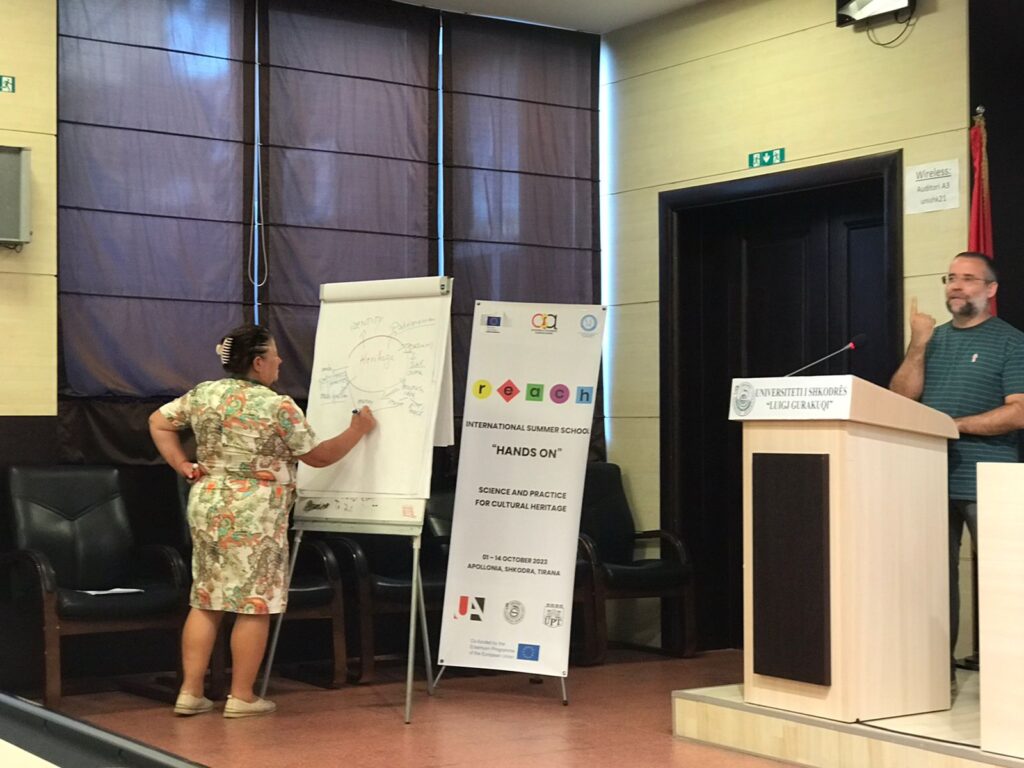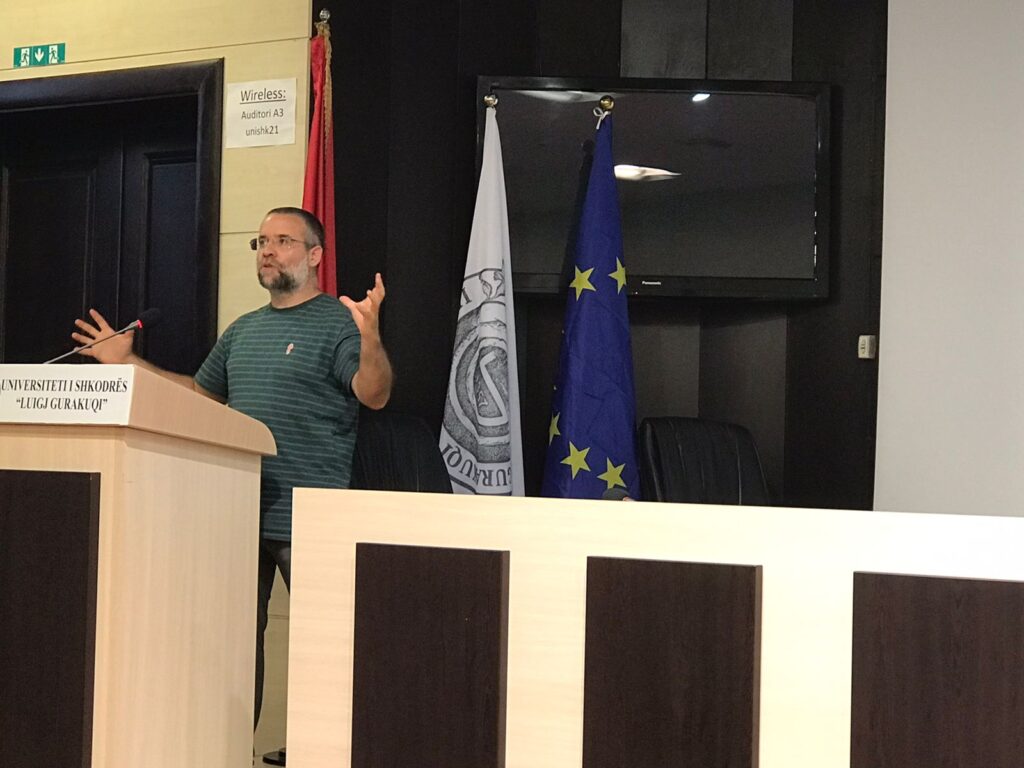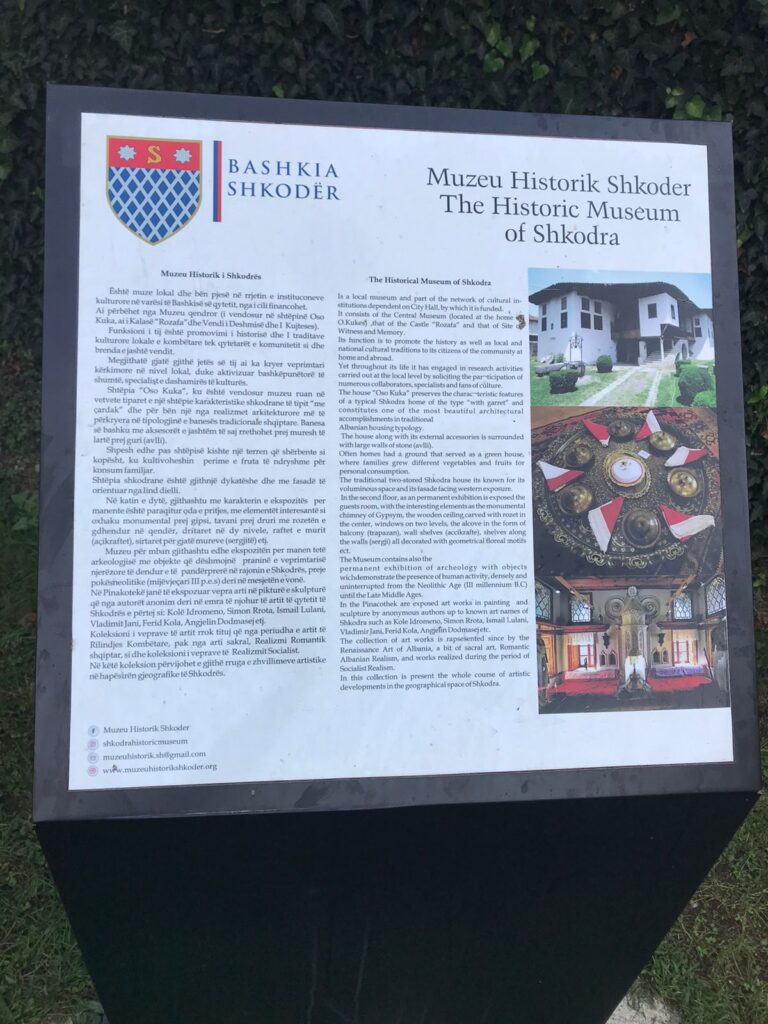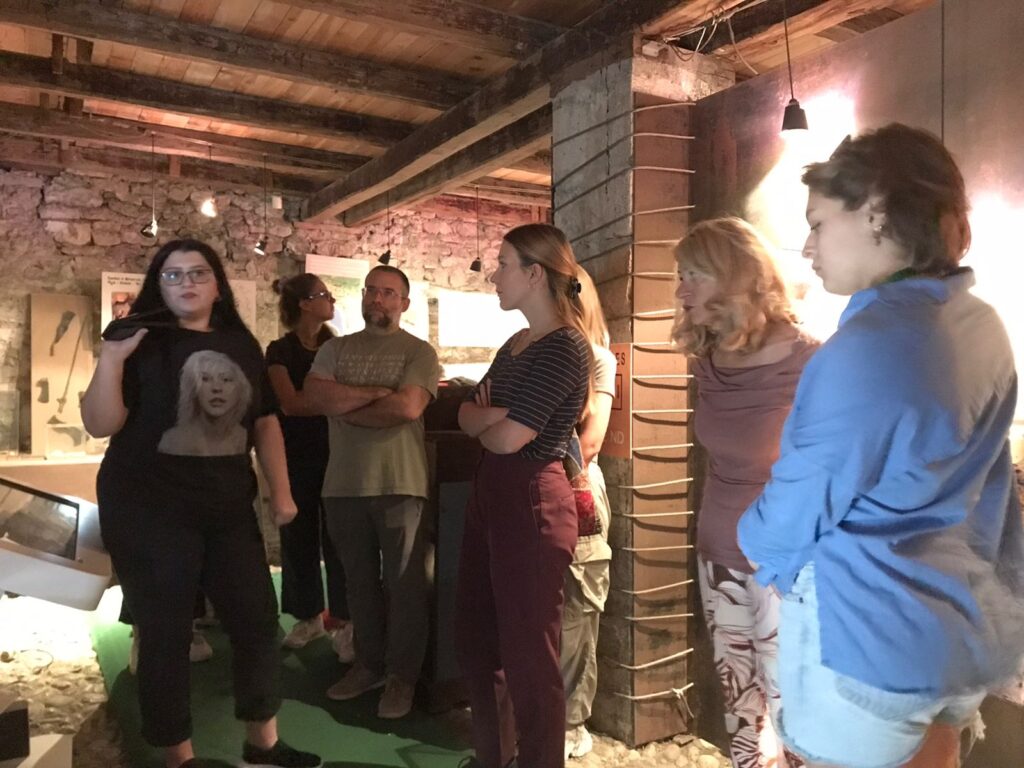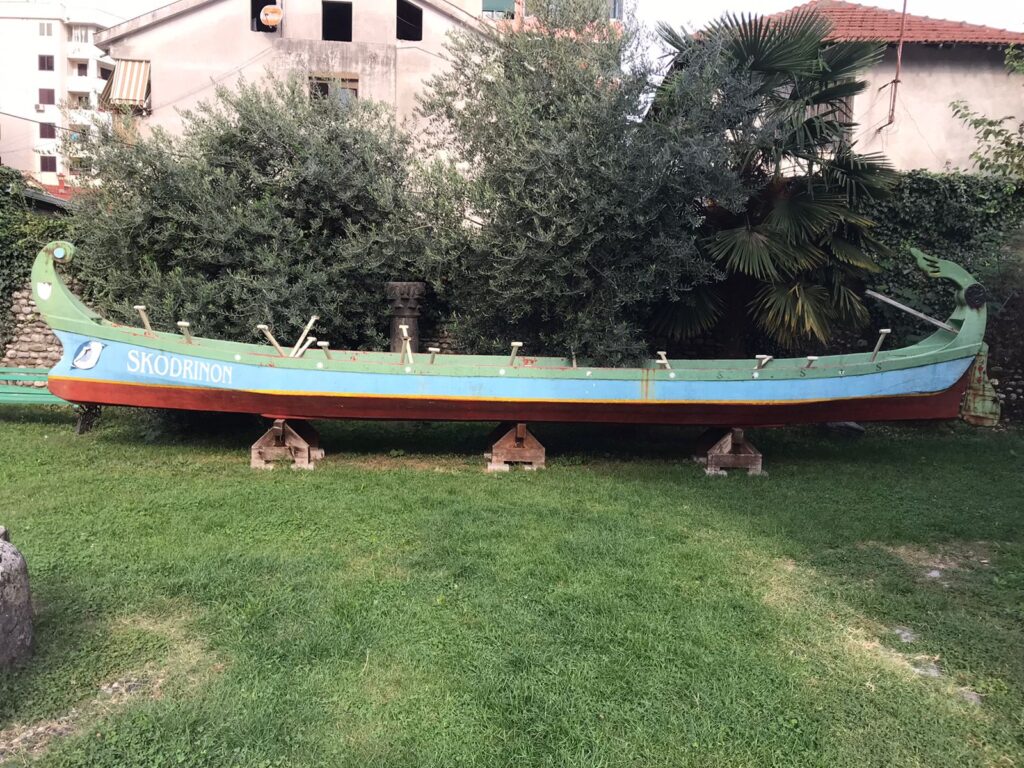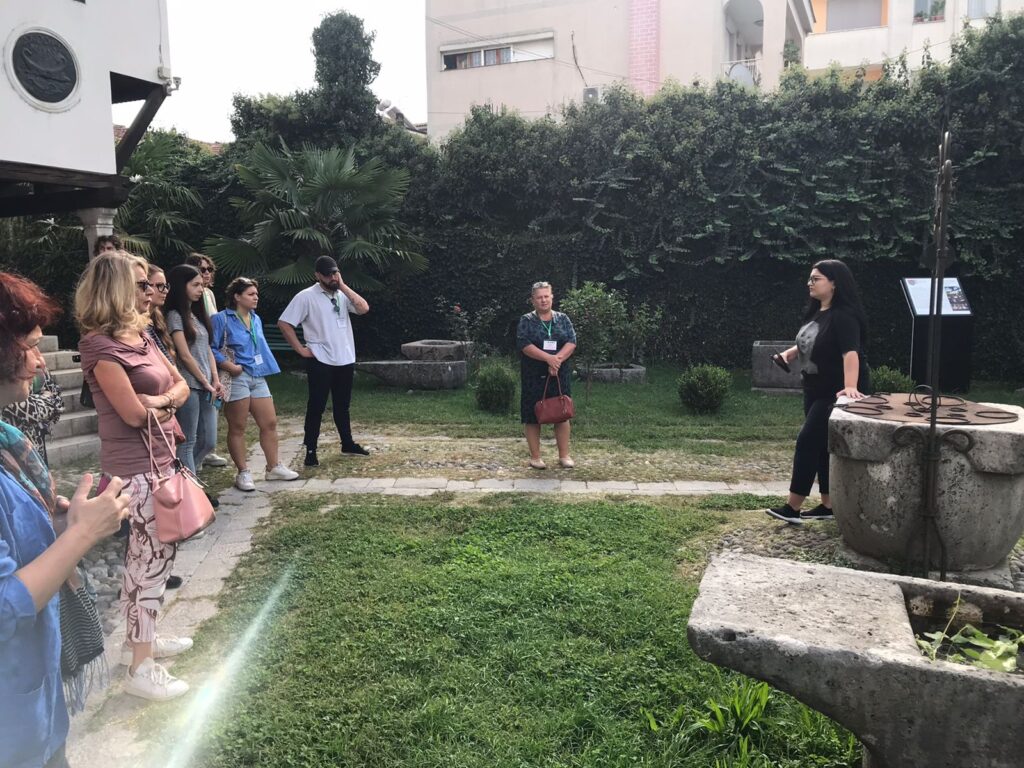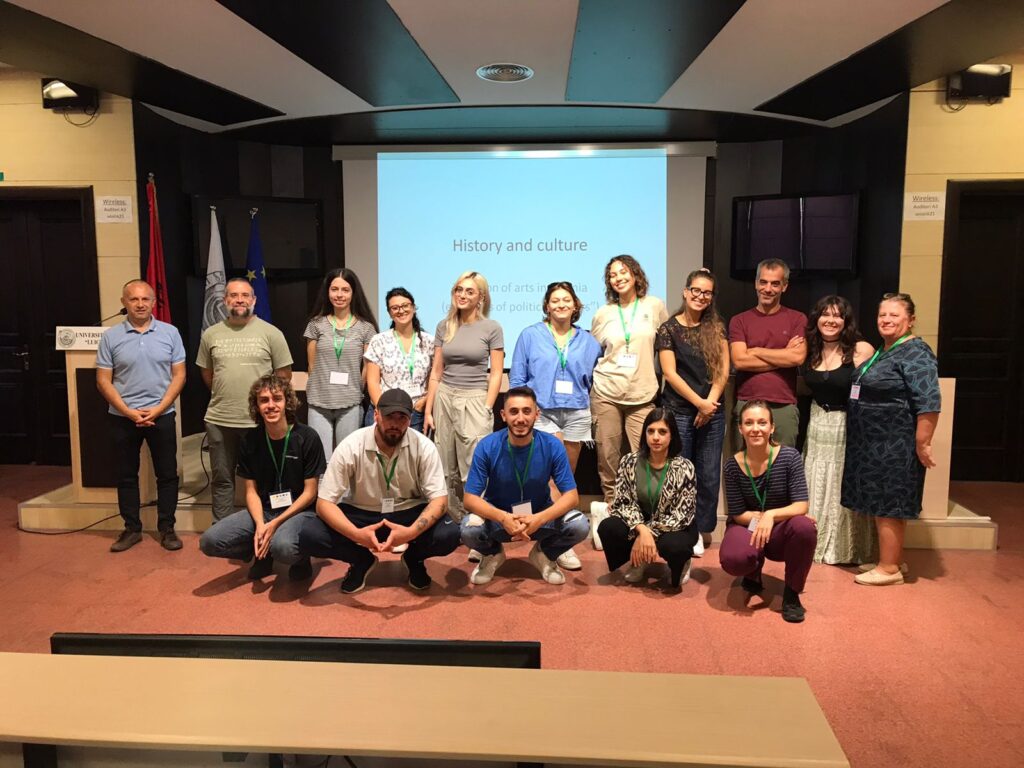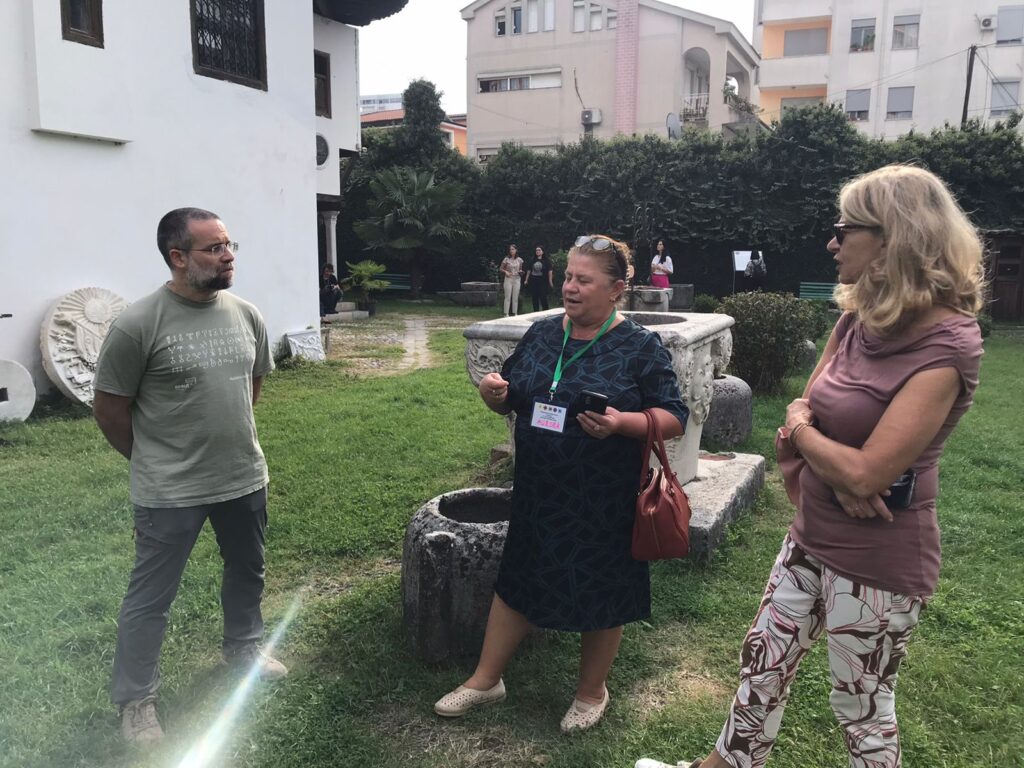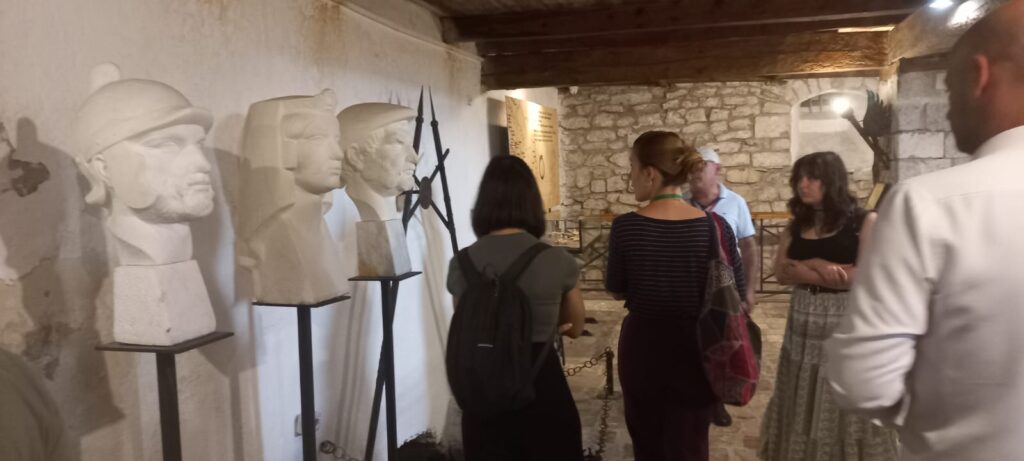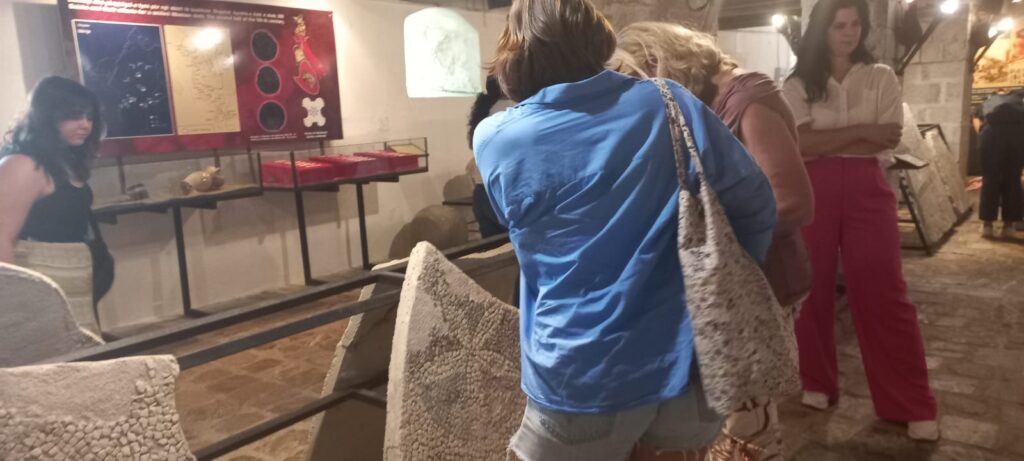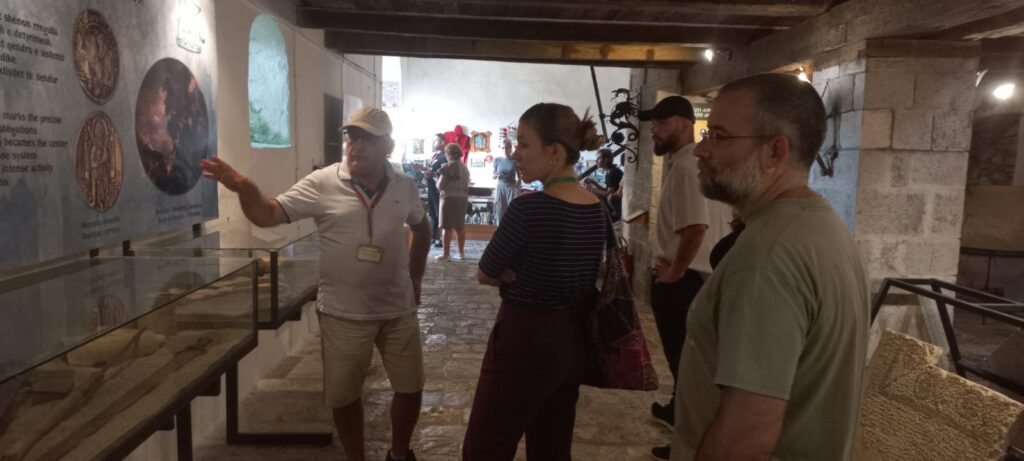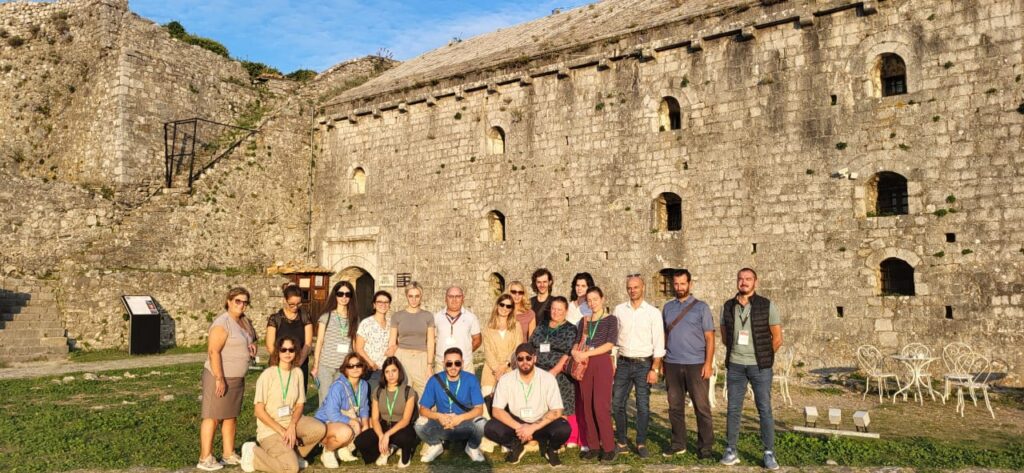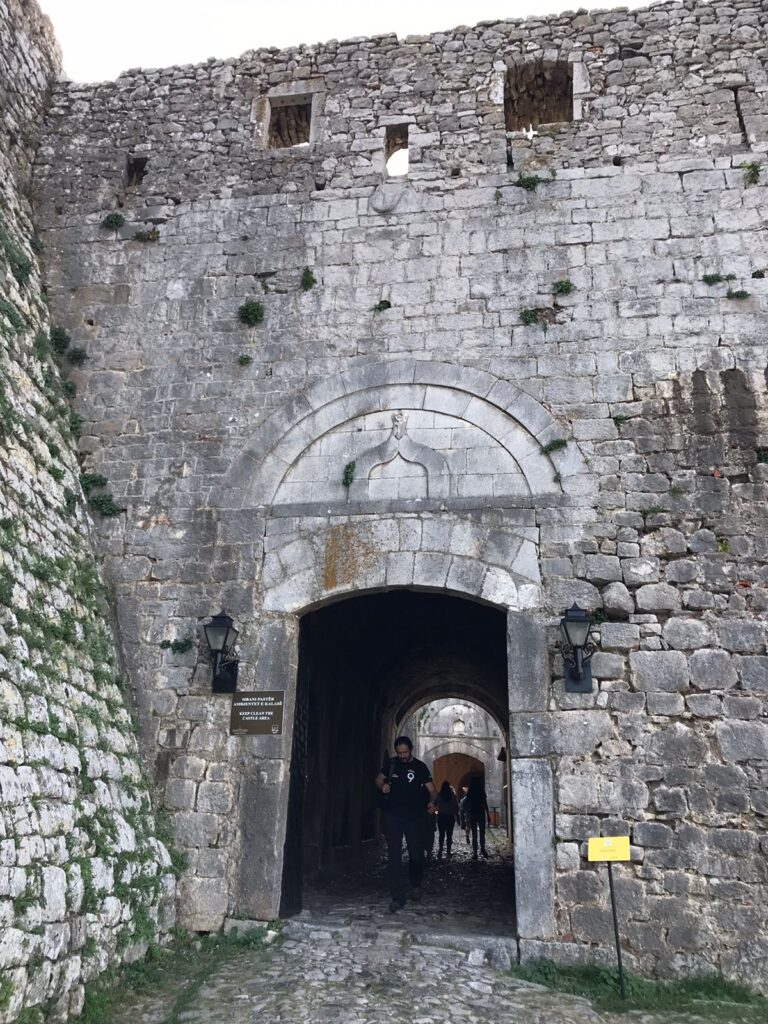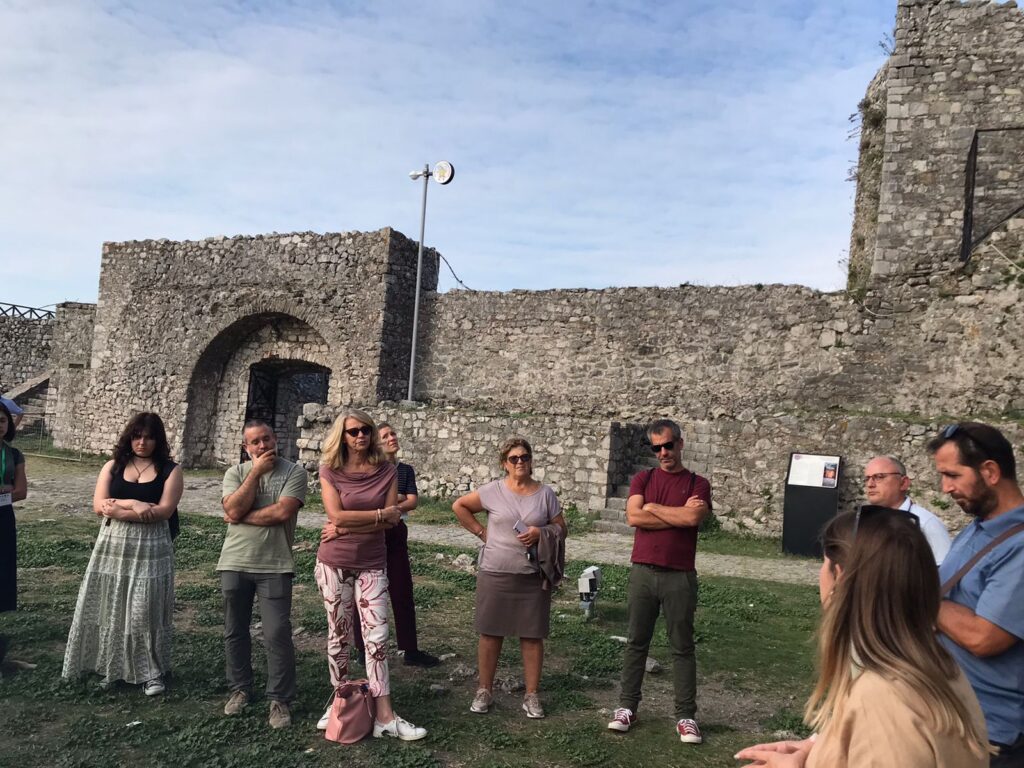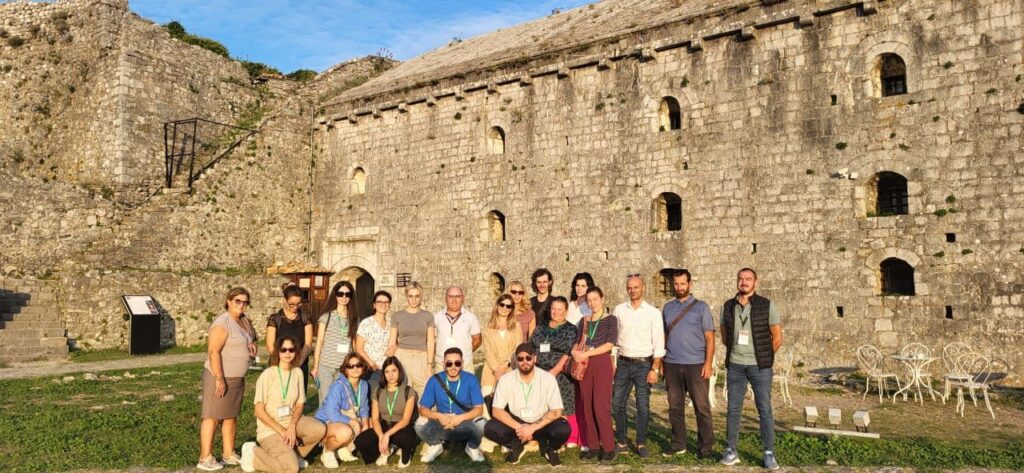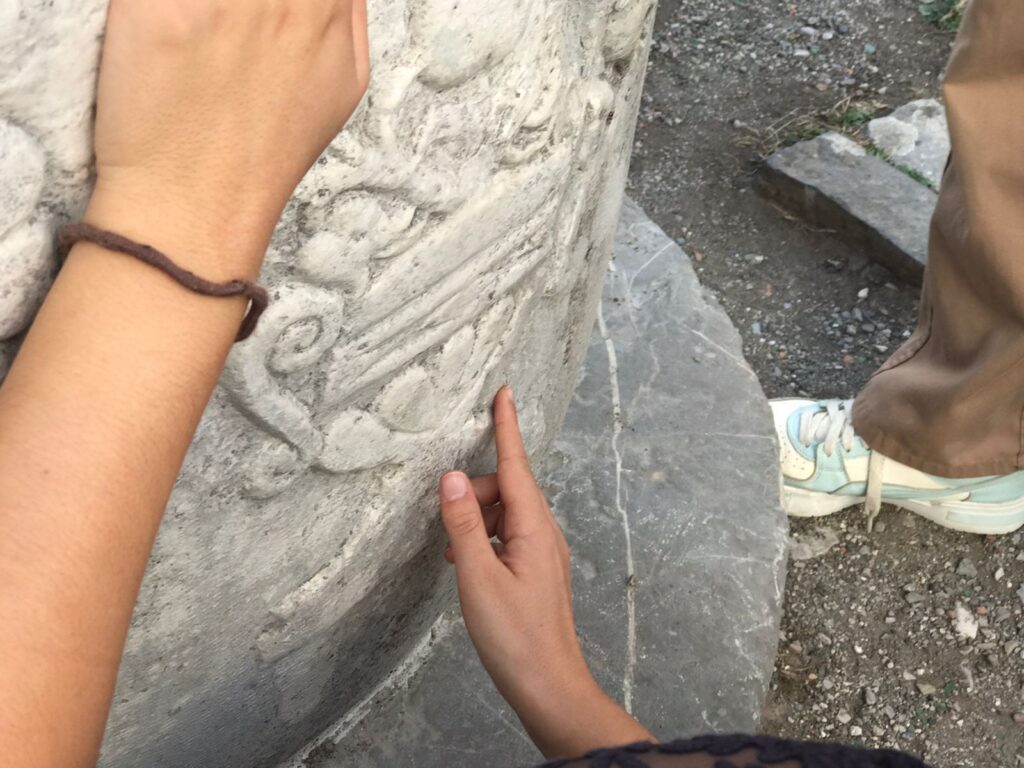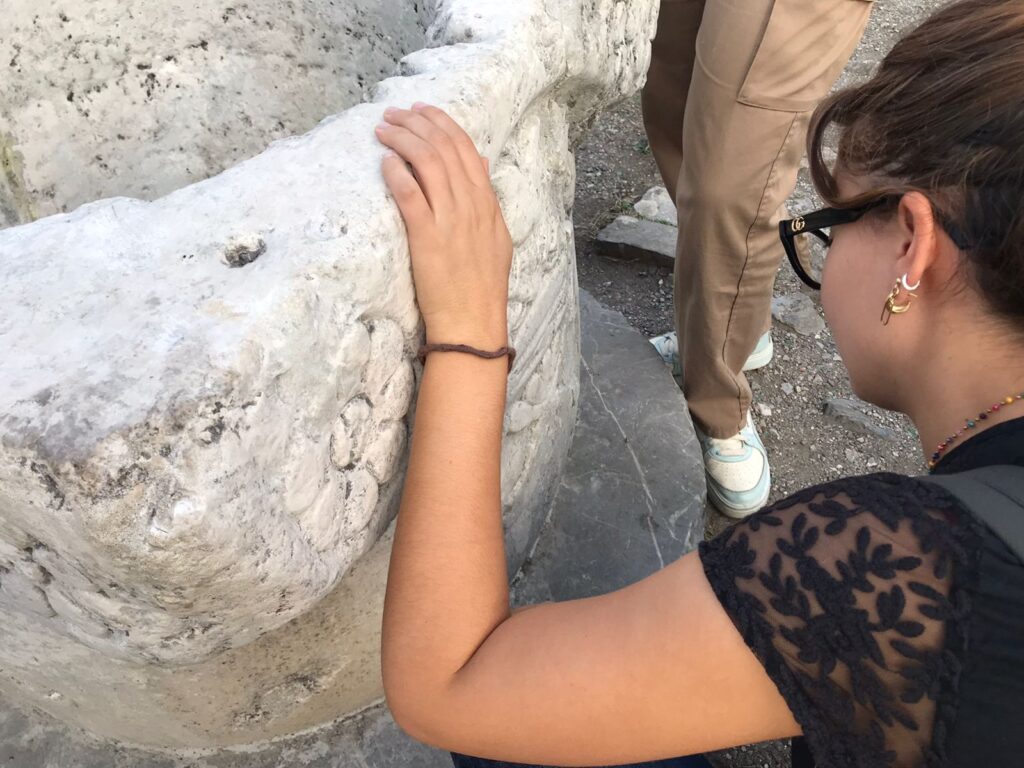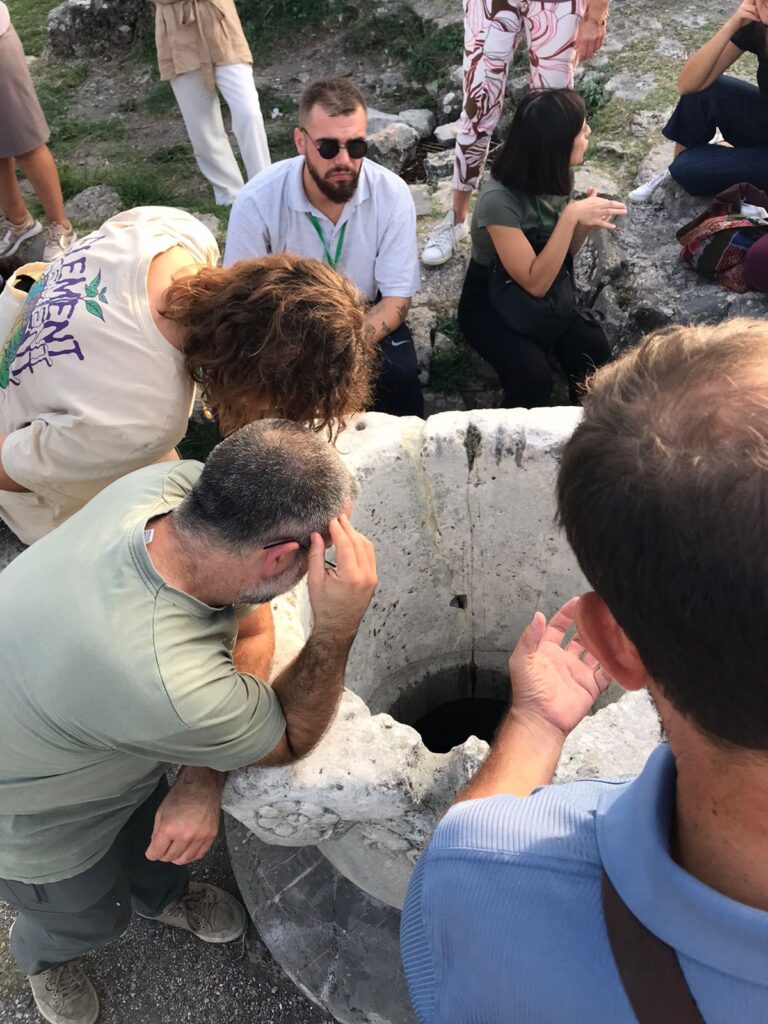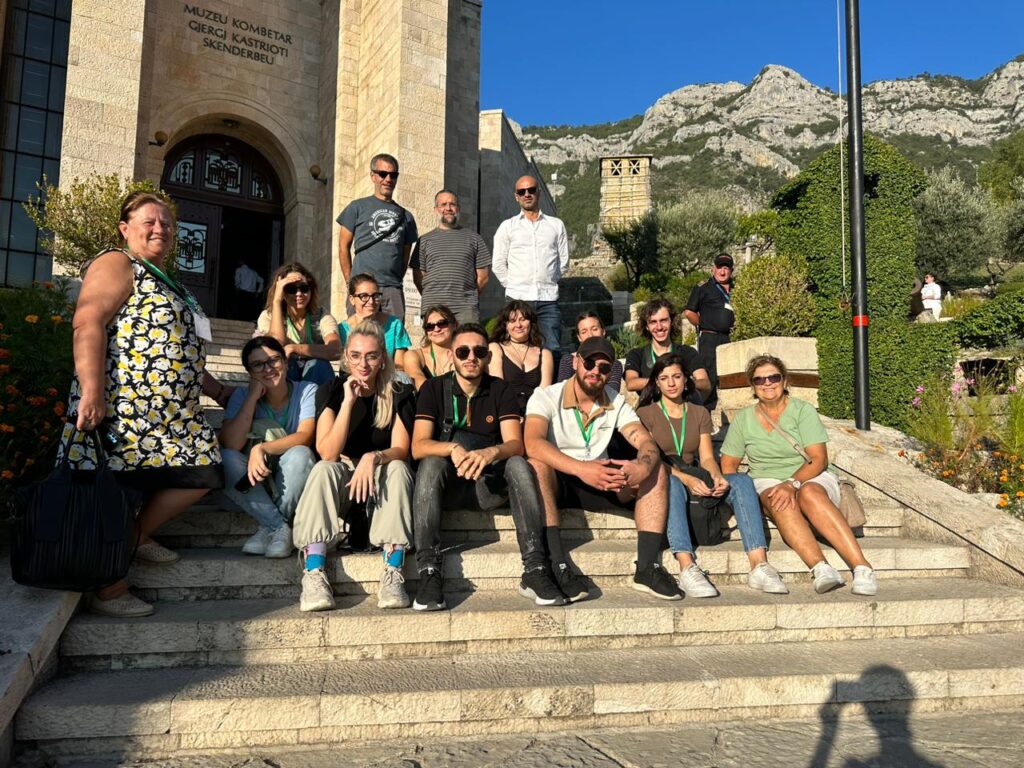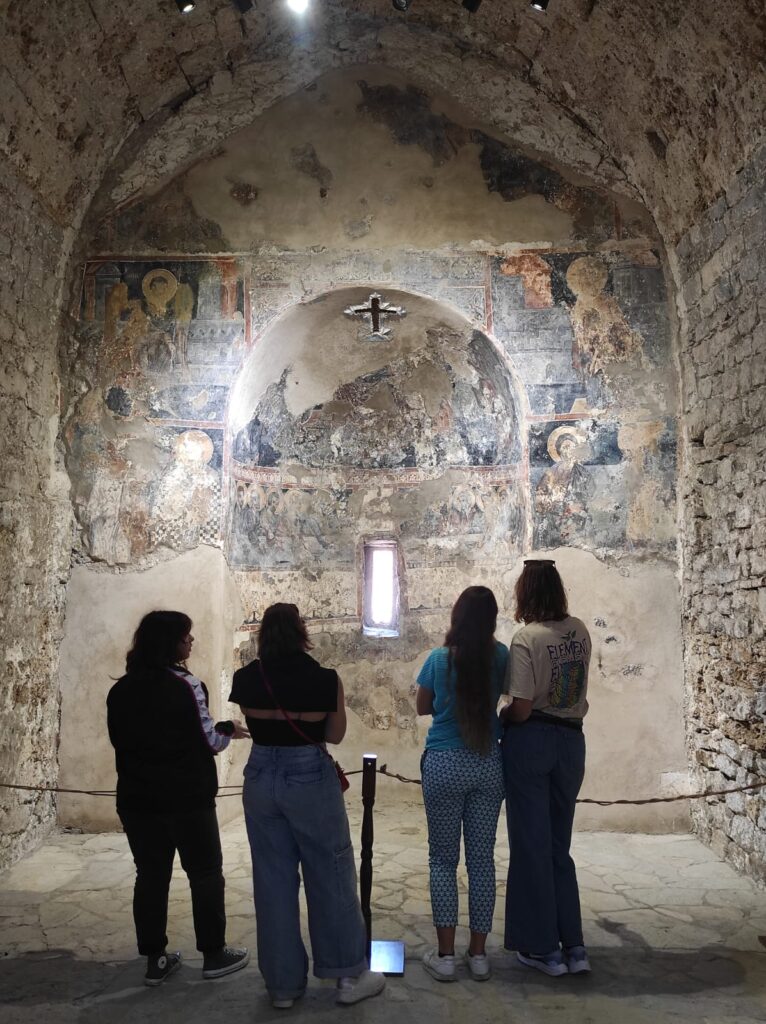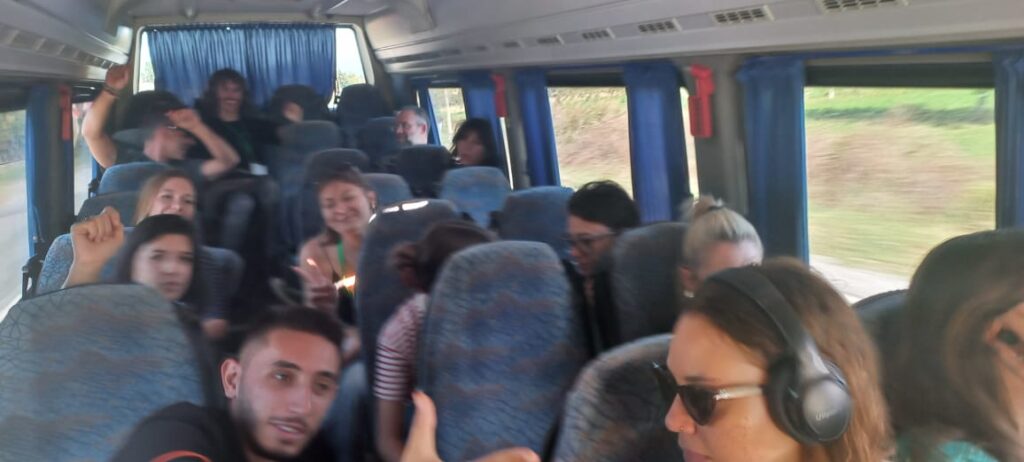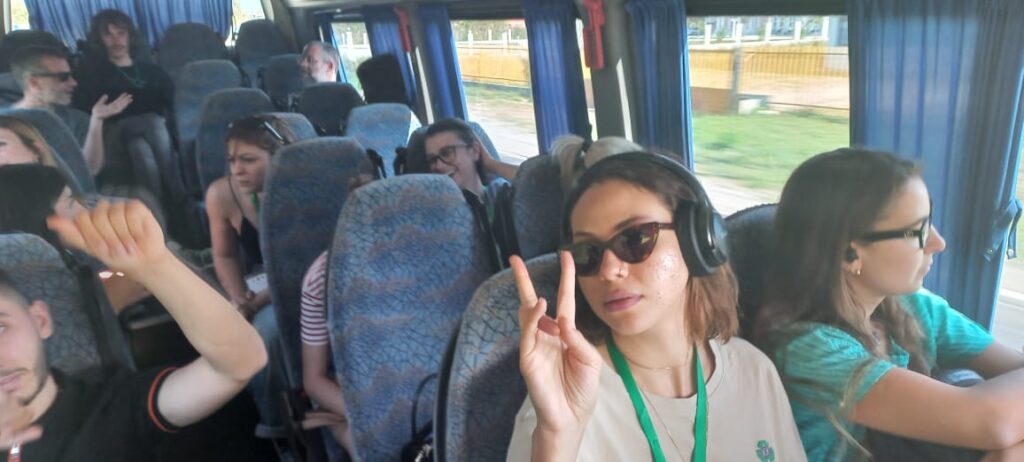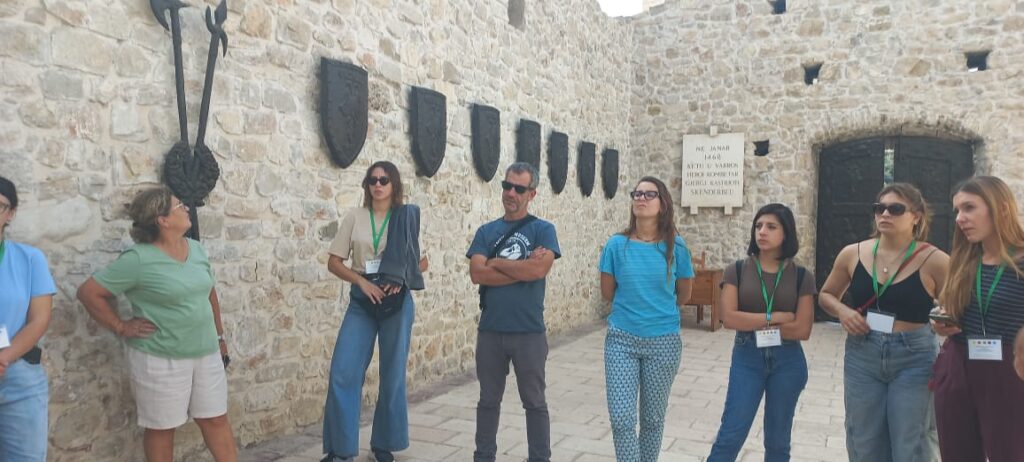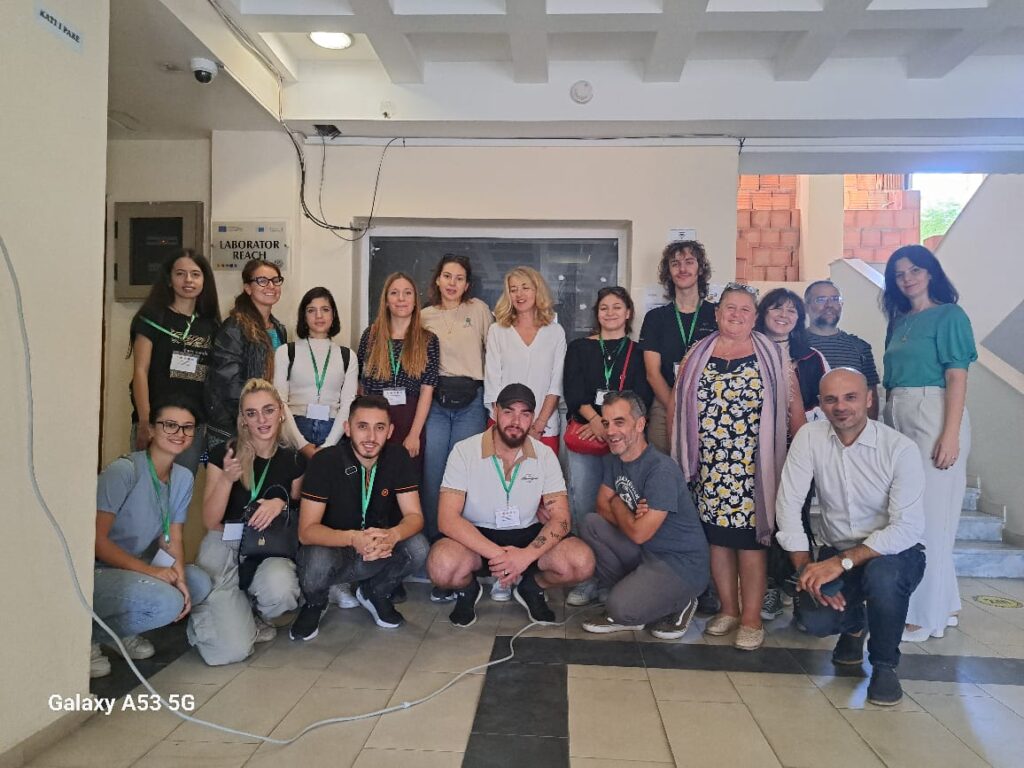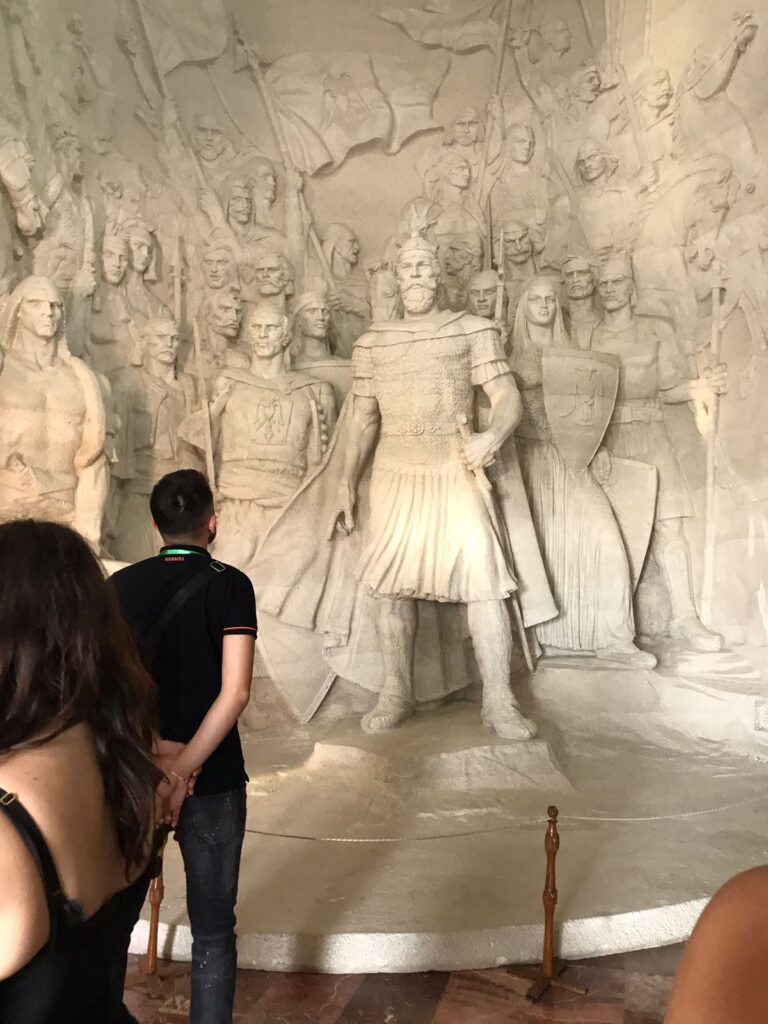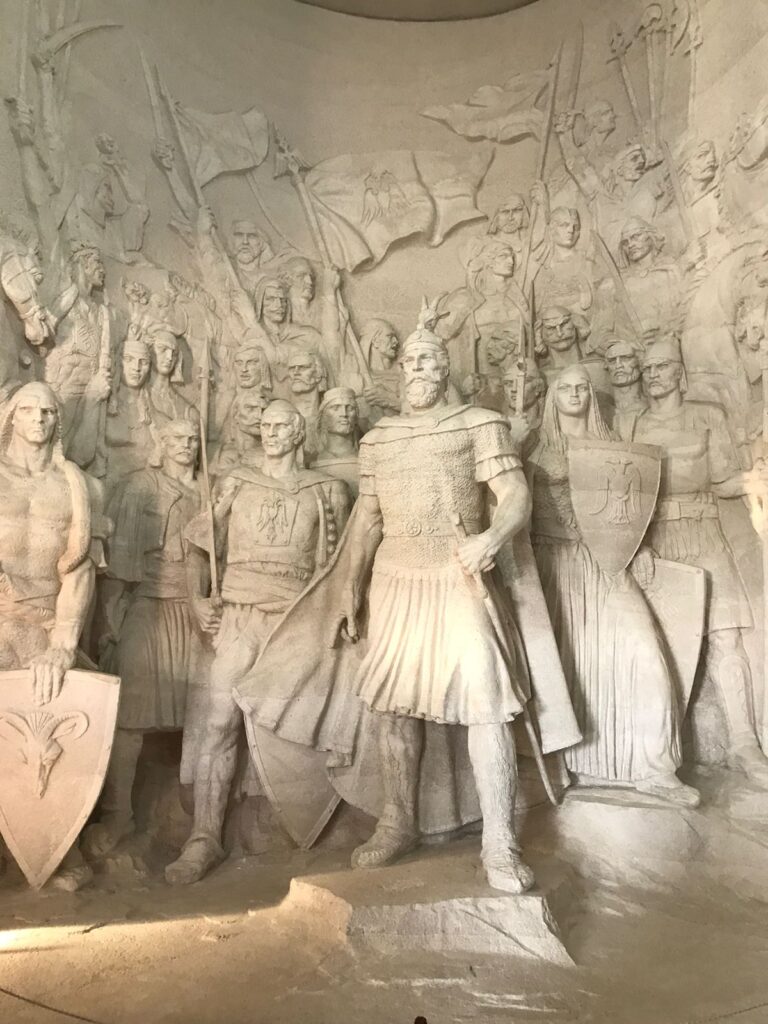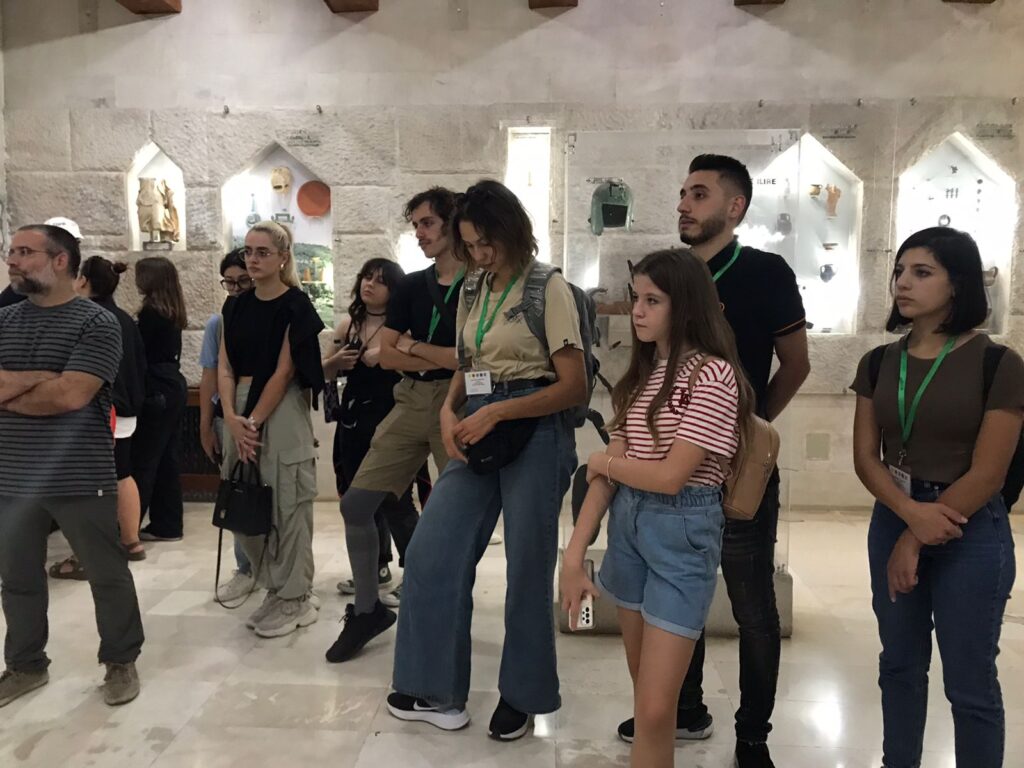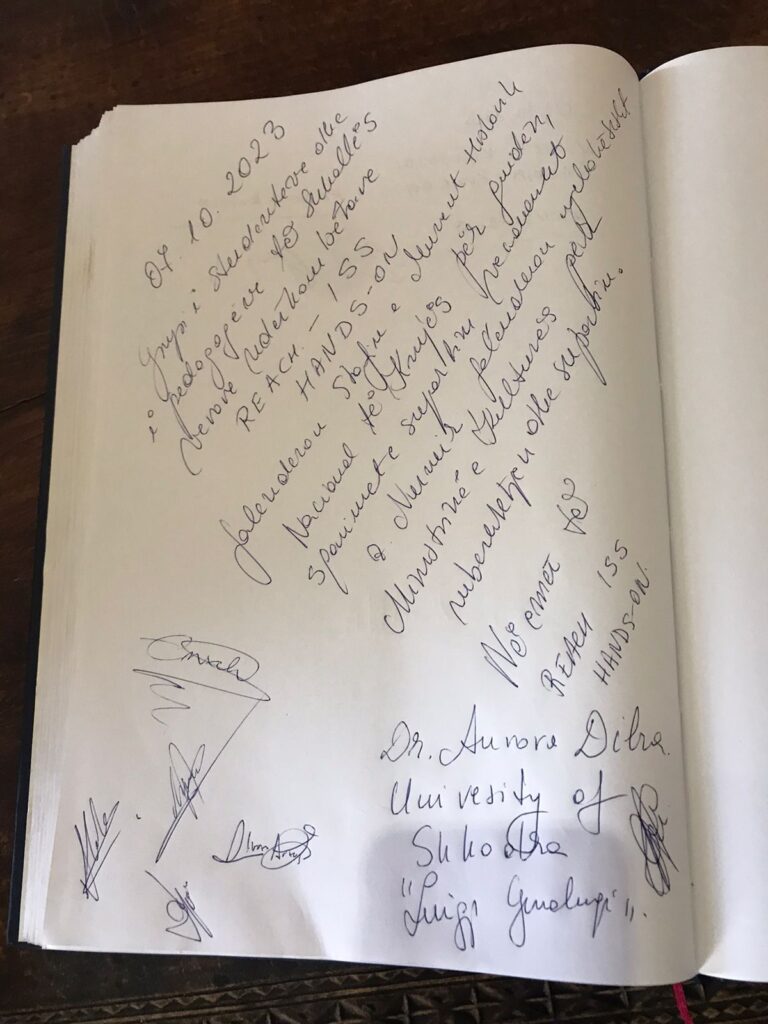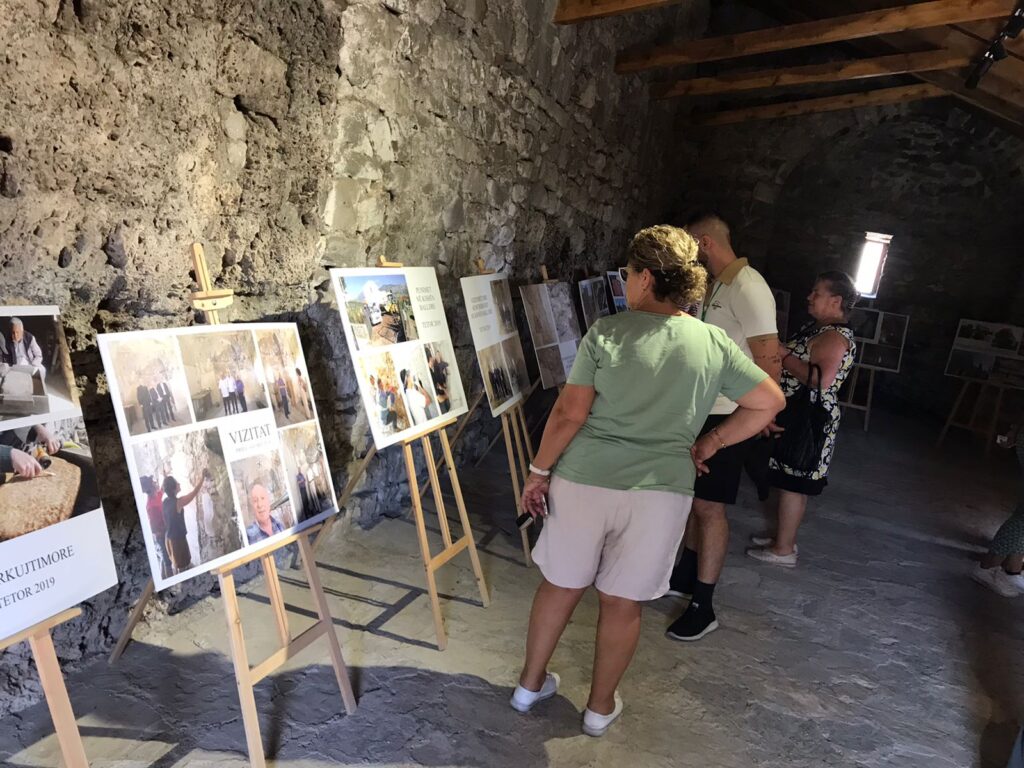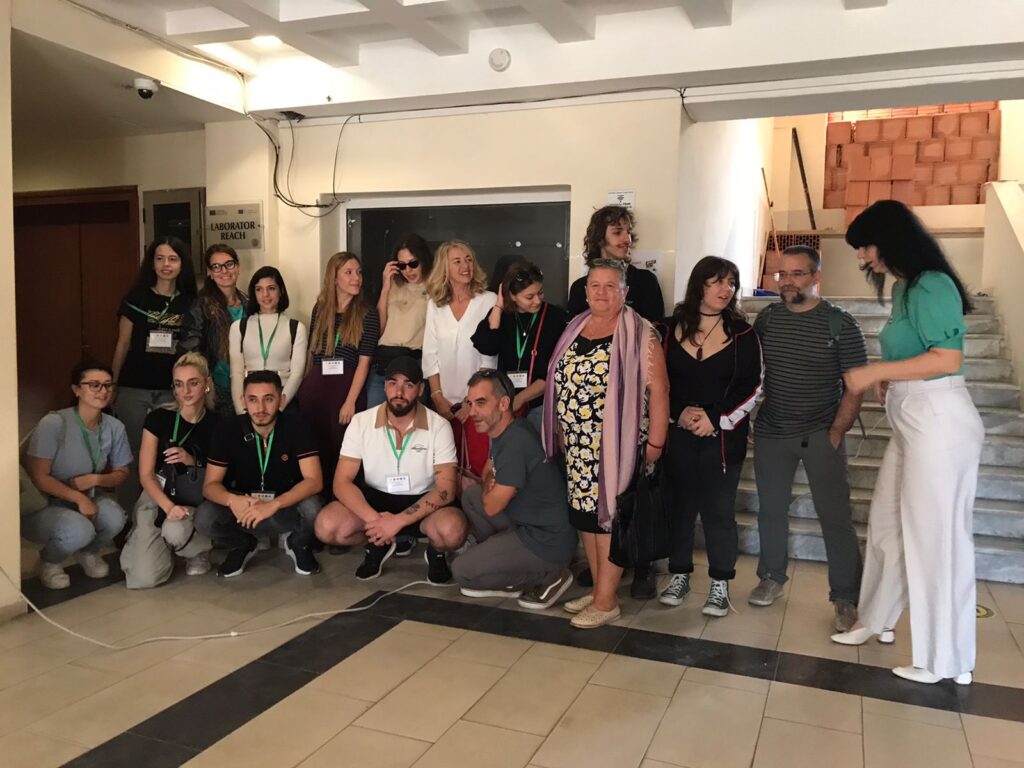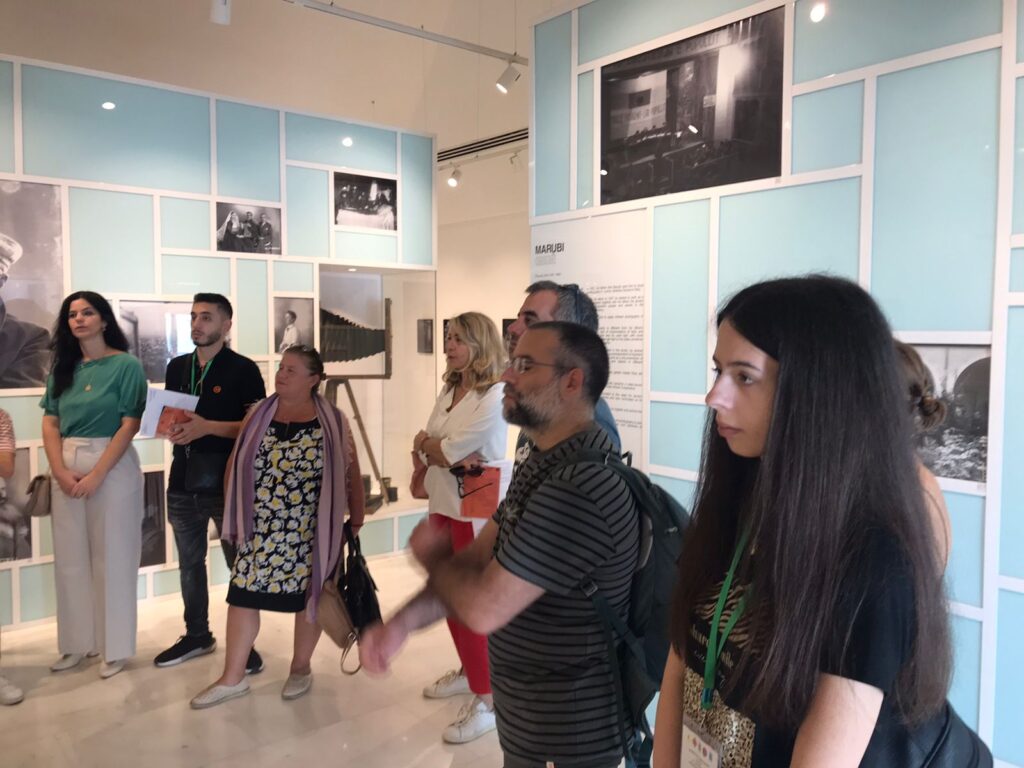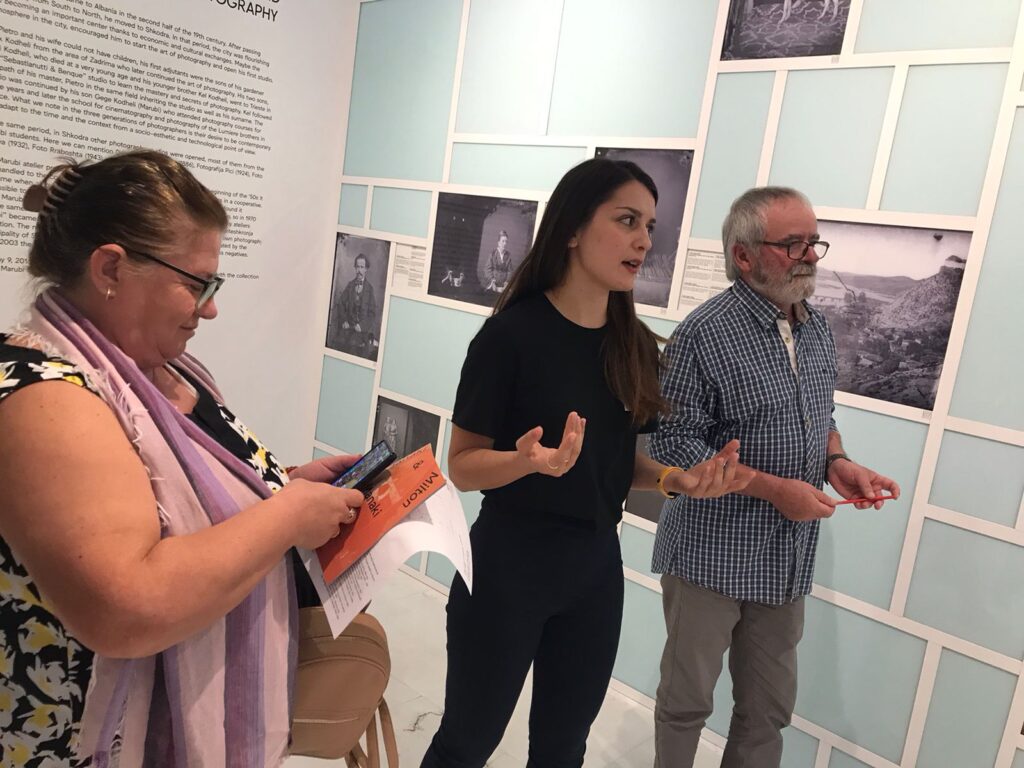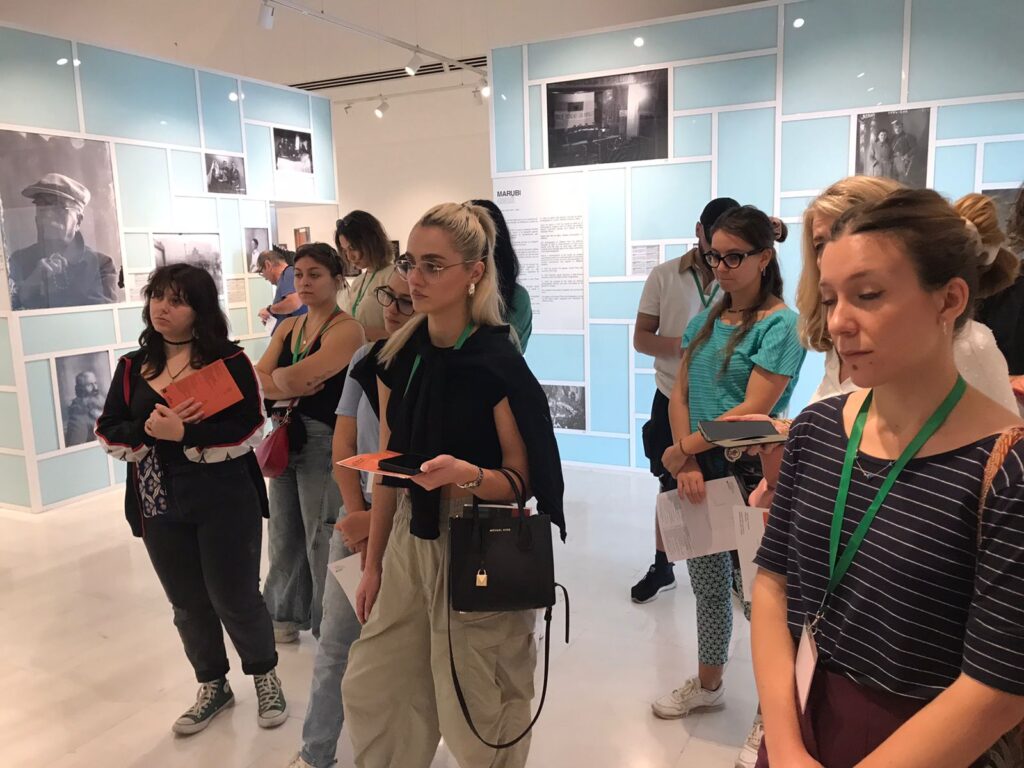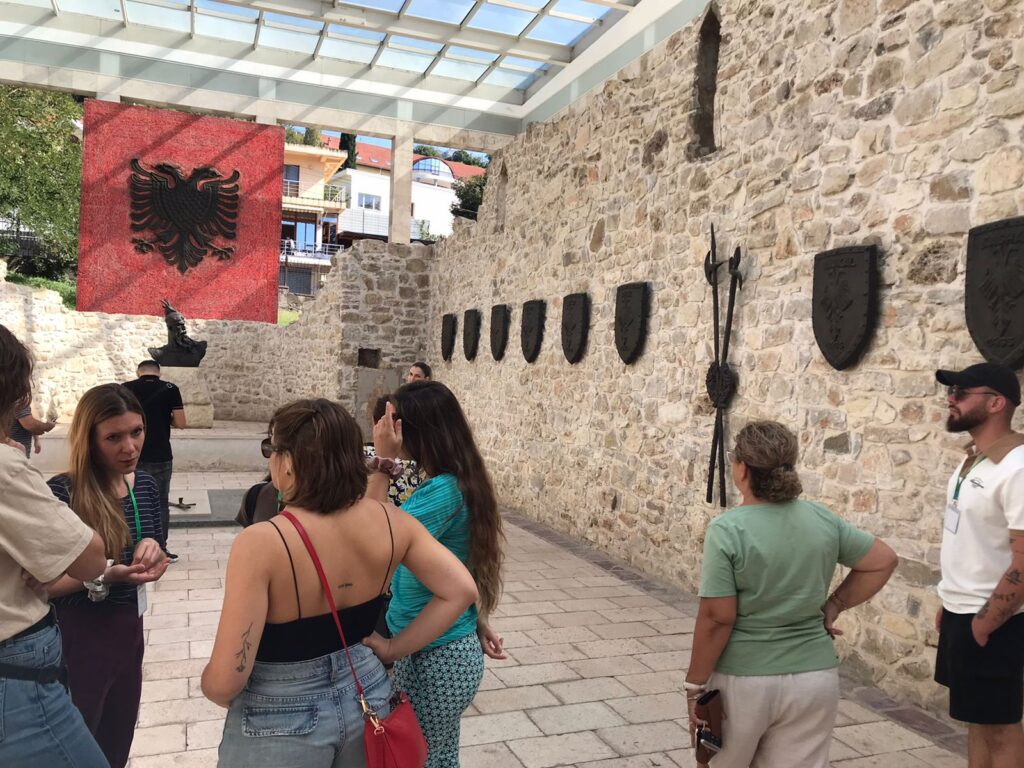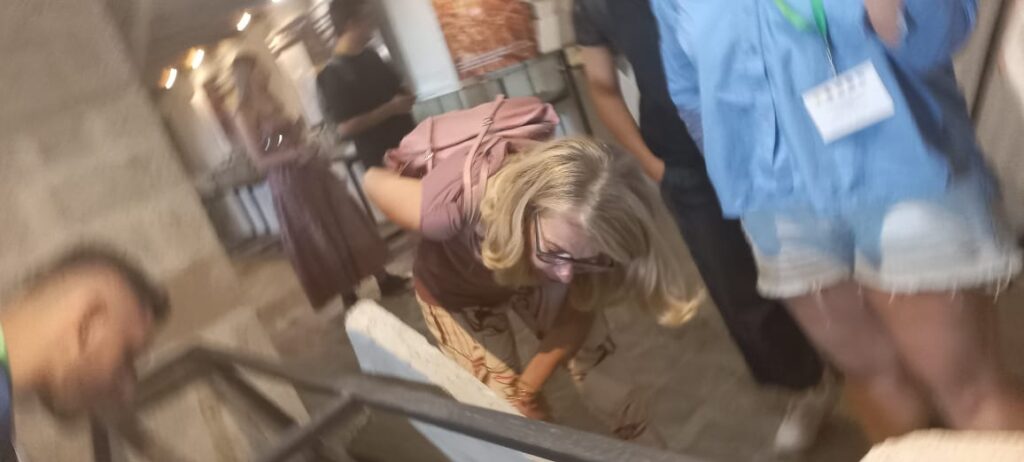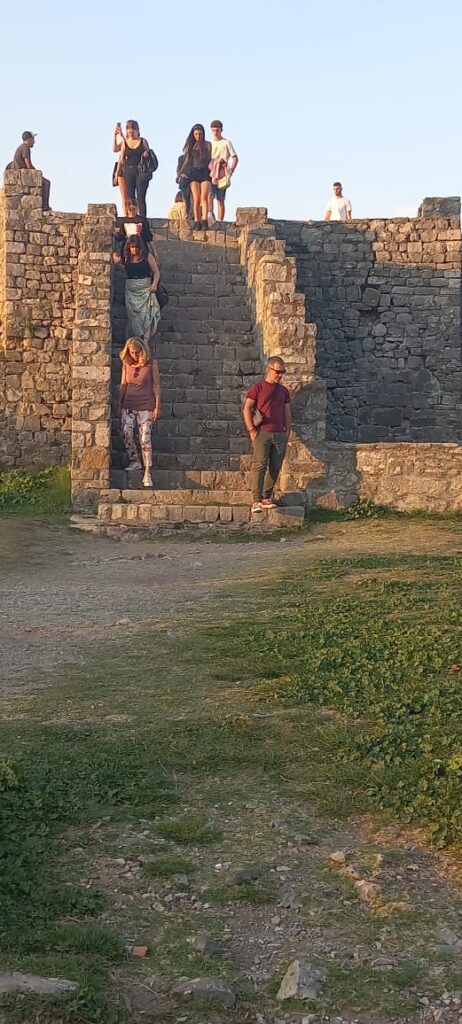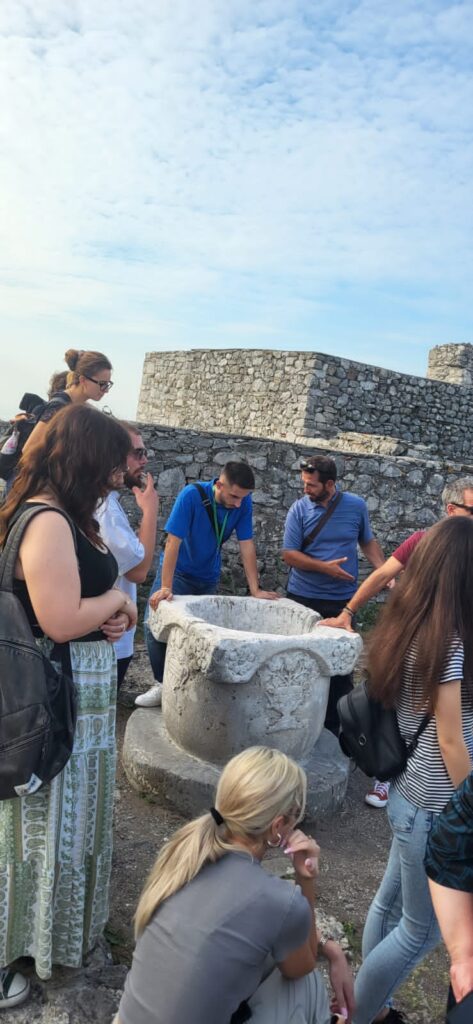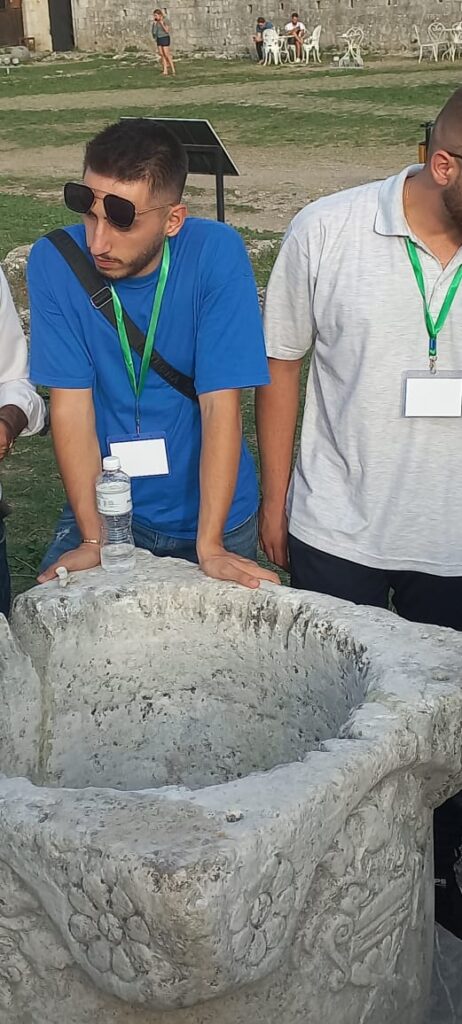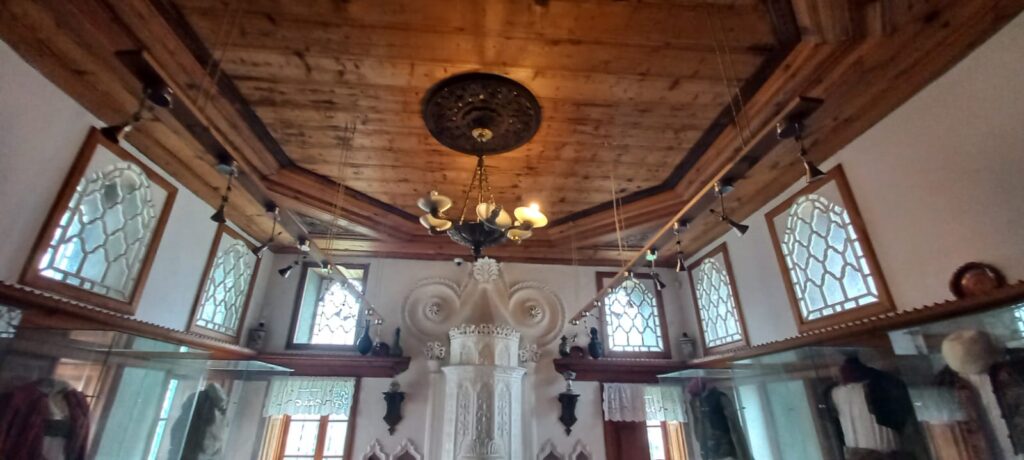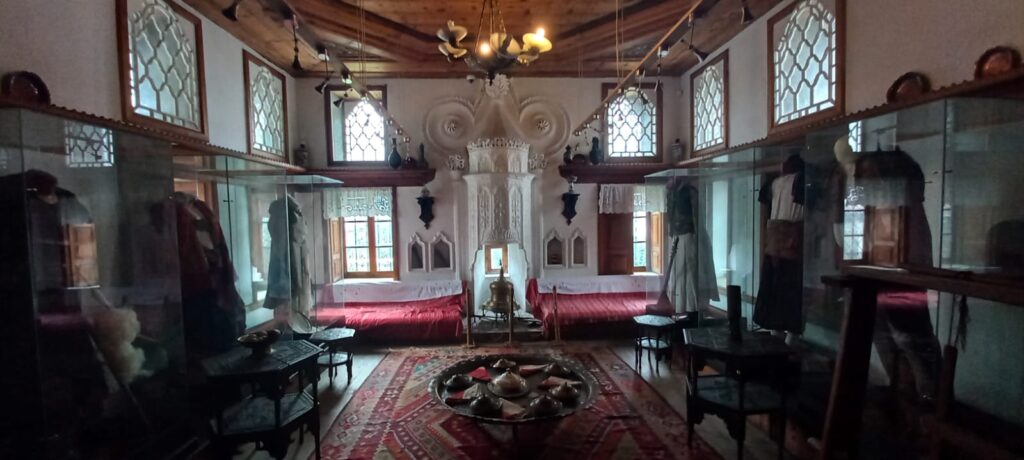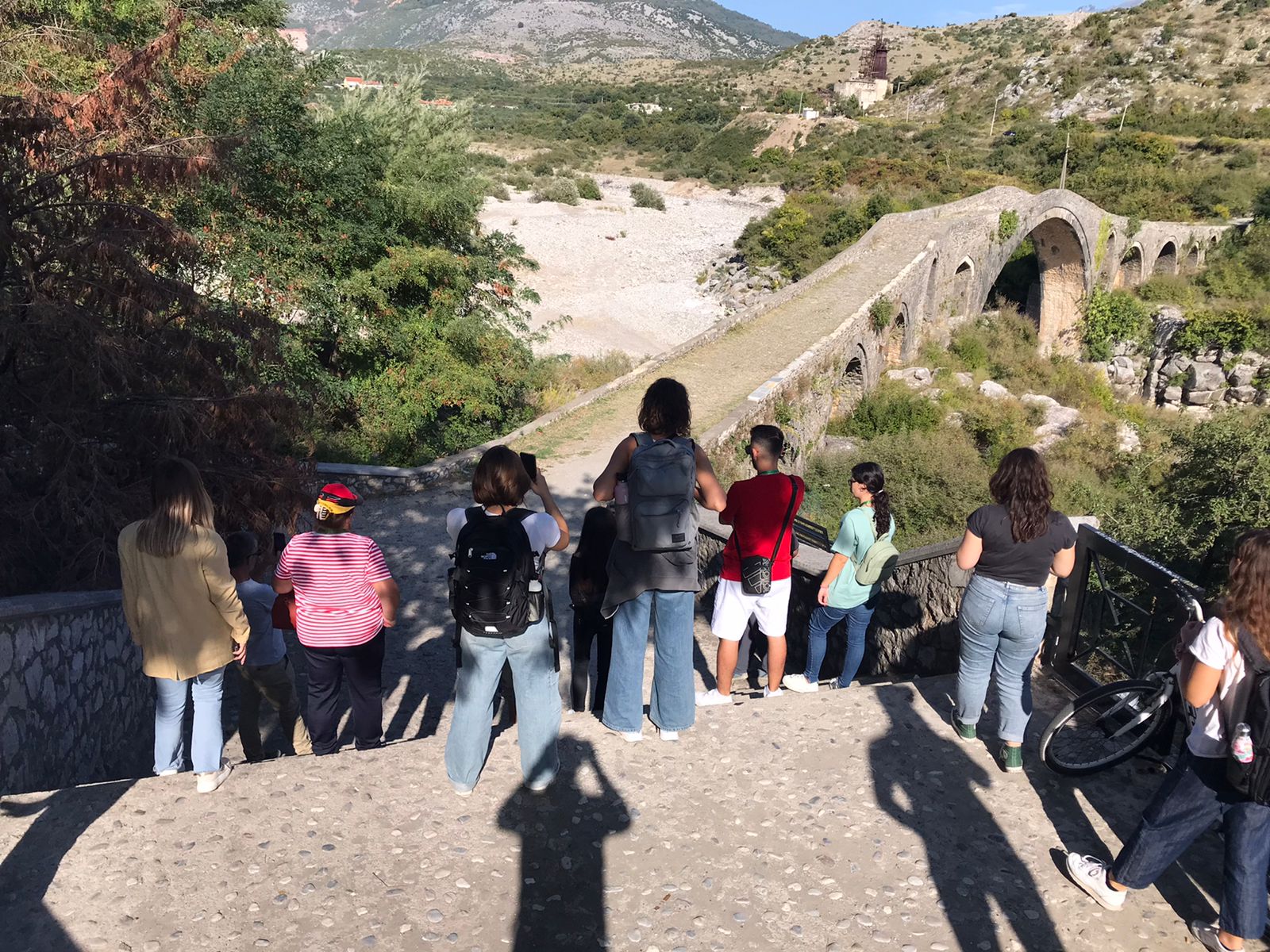DAY 3
Today the group of students and teachers of the Summer School moved from Apollonia to the city of Shkodra, where was first at the famous Mesi bridge accompanied by Prof. Aurora Dibra, the archaeologist Dr.Helidon Sokoli of the Institute of Cultural Monuments and Dr. Besara Podgorica, Director of the Regional Office of Cultural Heritage of Shkodra. Followed a study visit to the Site of Witness and Memory, under the guidance of Xherardo Nikjari .
DAY 4
The day began with the welcome speech by Rajmonda Kcira, Rector of the University of Shkodra. The conference was recorded by Local TV and both teachers and students were interviewed. Lessons on the theory of conservation-restoration (Prof. Aurora Dibra) and Interdisciplinary management of cultural heritage (Prof. Pablo Porral from ESCRBBCCG ) followed. After lunch the group moved to the Atelie Youth Centre, where Fatmir Juka from the Art Gallery and Arianna Buffagni with Angela Graziano from UNIBO, talked about techniques of paintings restauration and discussed with students the question of whether restoration is only a physical act of conservation or also contains an important component of historical interpretation.
DAY 5
Students visited the Historical Museum of Shokdra accompanied by Prof. Aurora Dibra and Prof. Rubin Mandja, lecturer at the Art Department at the “Luigj Gurakuqi” University and expert on Albanian traditional painting.
The group was then welcomed at Rozafa Castle by Besara Podgorica, Director of the Regional Directorate of Cultural Heritage in Shkoder and was led to discover this Illyrian fortification by the archeologist Helidon Sokoli.
A practical hands-on activity followed, with Prof Mariangela Vandini from UNIBO on the definition of a diagnostic project.
DAY 6
The researcher’s staff of Luigi Gurakuqi University suggested to the students and EU researchers of the Hands On Summer School that the work on the study and/or preparation of restoration projects should also include targeted visits that address issues related to both
a) the frescoes in the church of St. Venerable Sh. Premtë, (12th-13th century) in Balldren and
b) the restoration of old cameras and time-damaged vintage negatives at the National Museum of Photography in Marubi in Shkodra.
Also helpful in this regard was the following in-depth visit with lectures and discussions on three Albanian cultural-historical heritage sites:
c) the Skanderberg Memorial where, on March 2, 1444, the Albanian Princes gathered around their Assembly, and where, on January 17, 1468, the hero Gjergj Kastrioti Skenderbeu was buried, and
d) the Kruja Castle which is mentioned since the IX century
e) the Museum dedicated to Skanderberg (1982).
